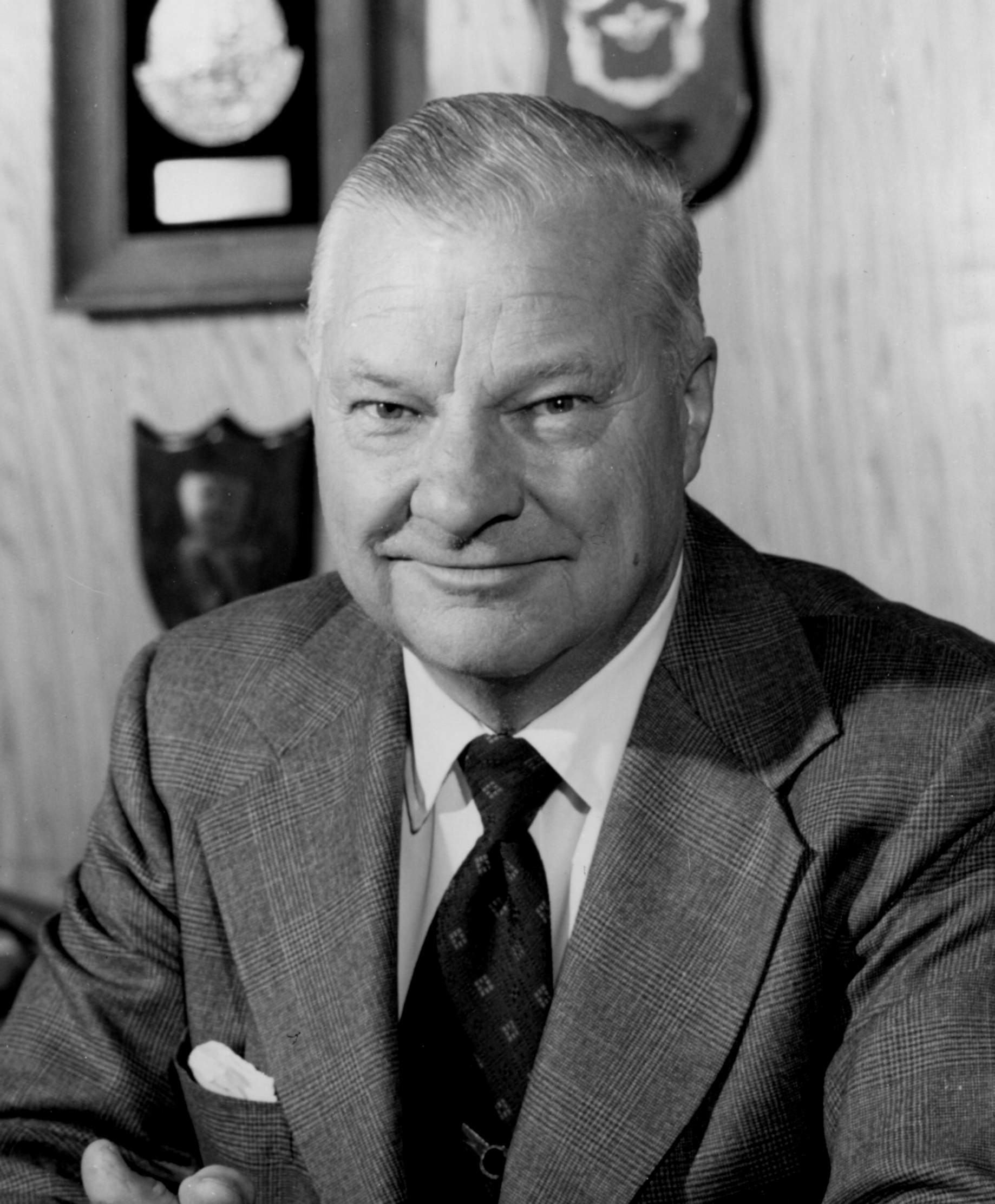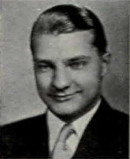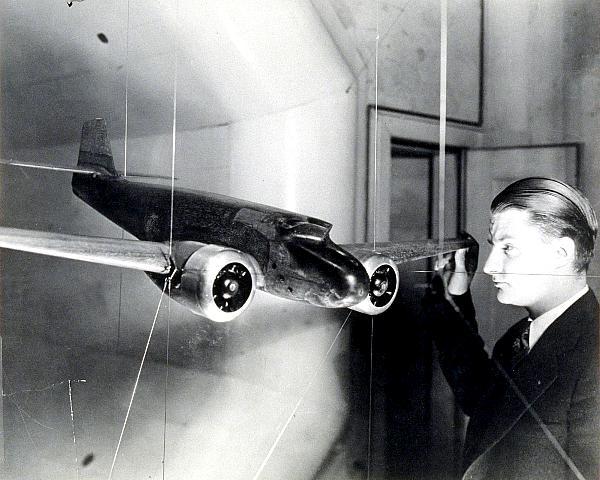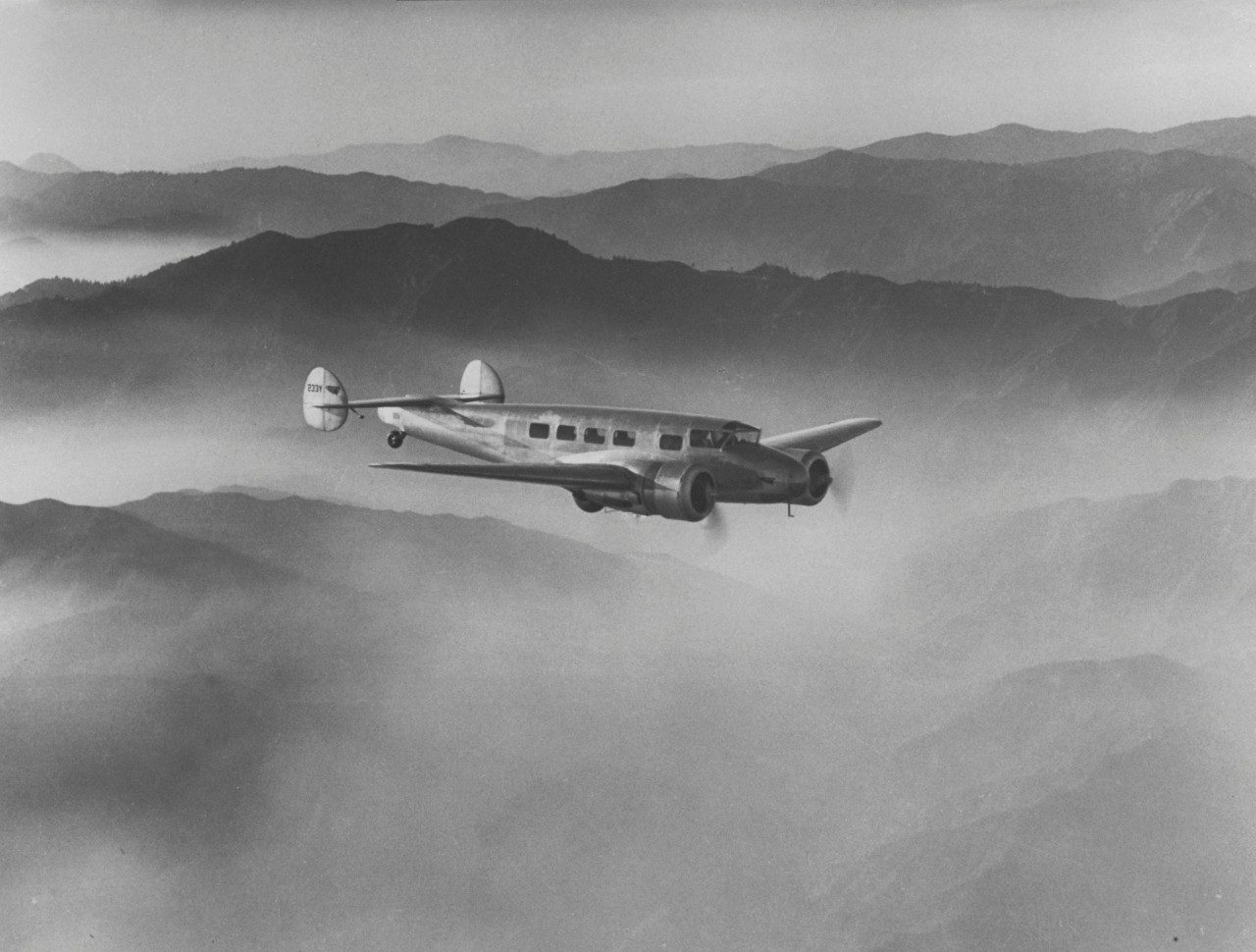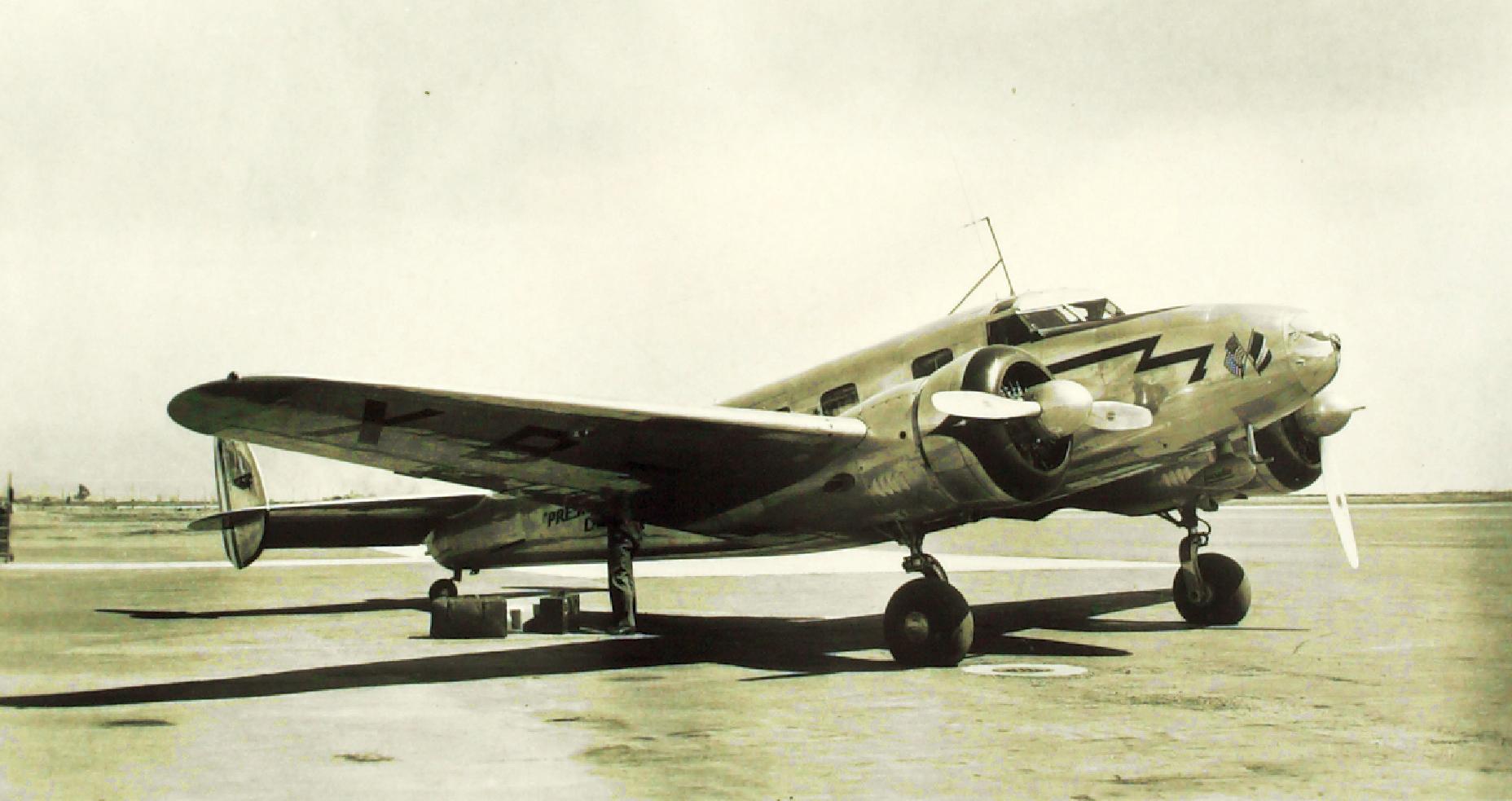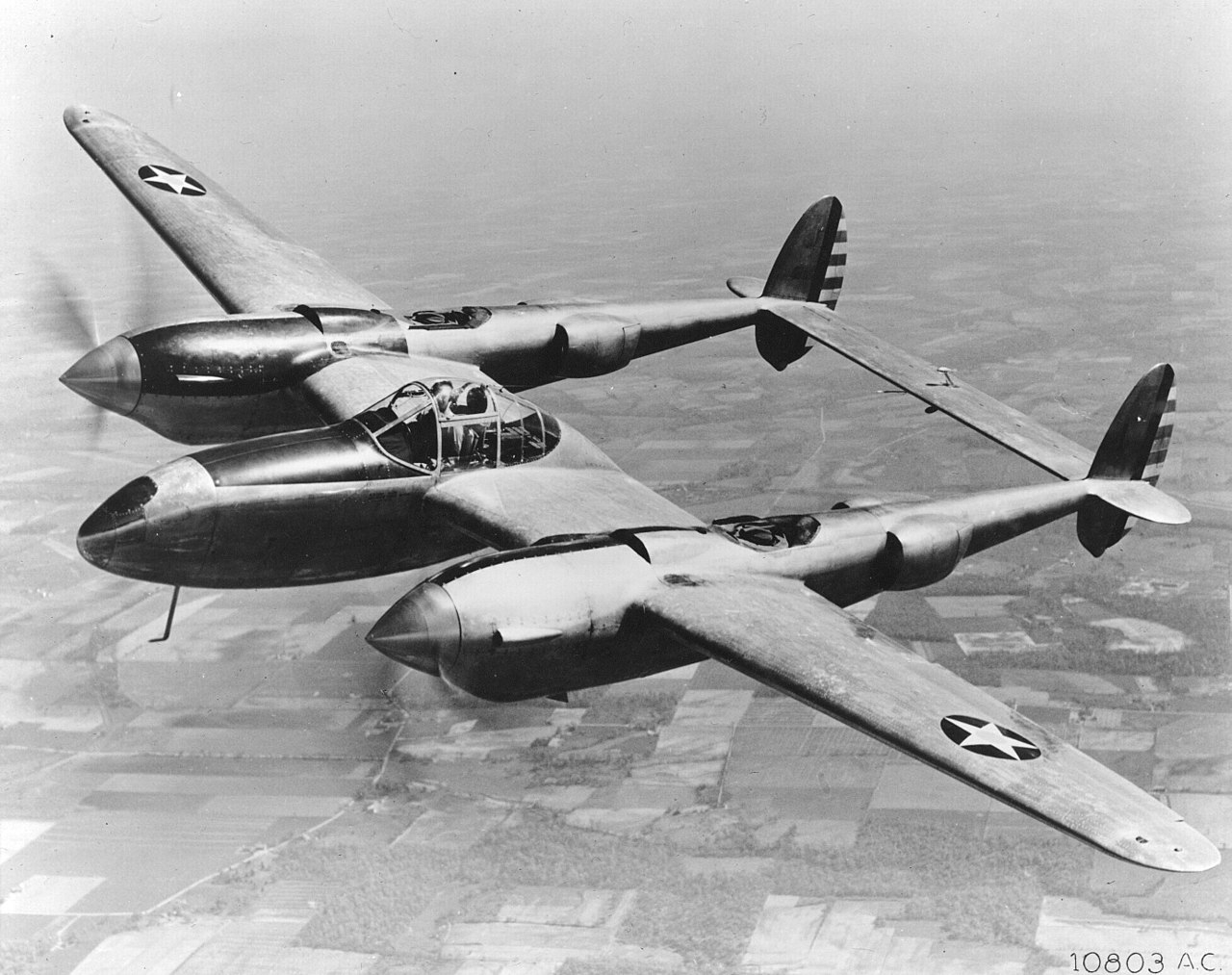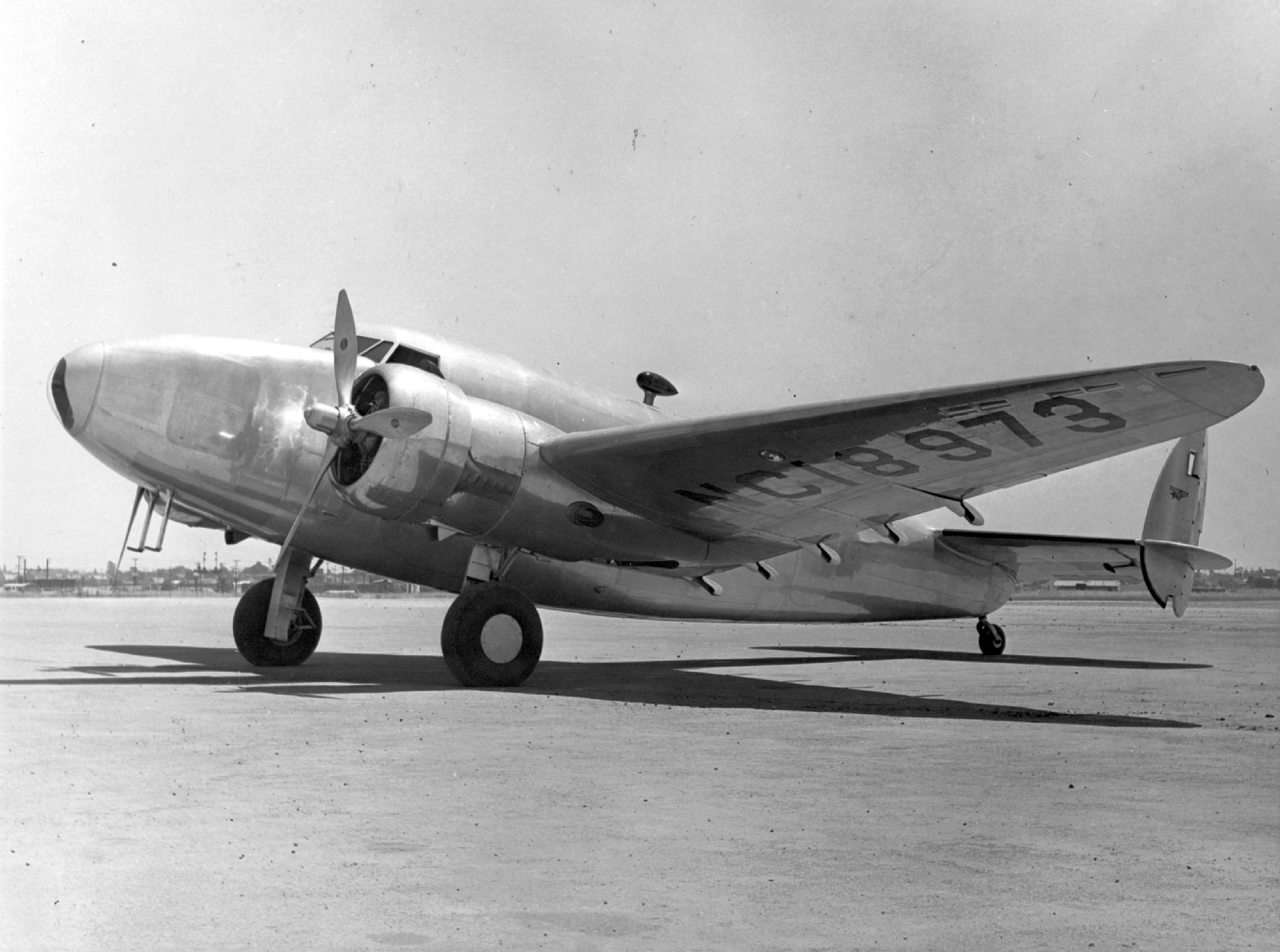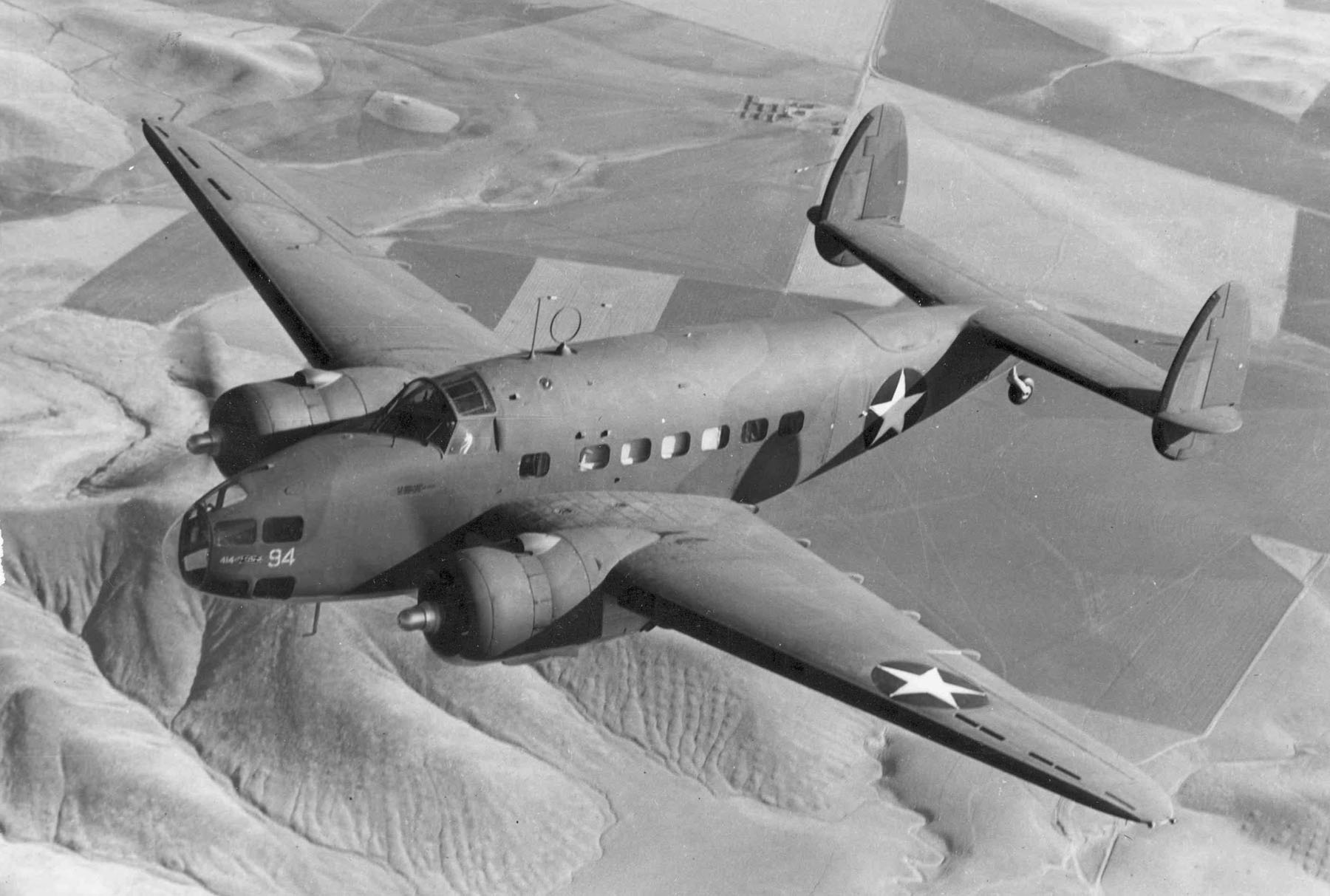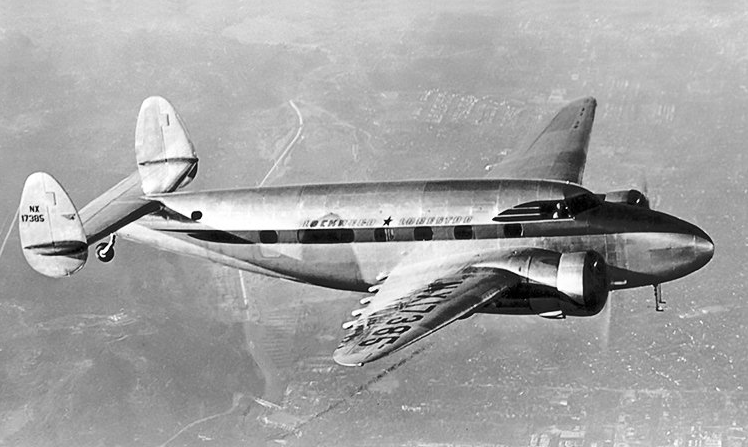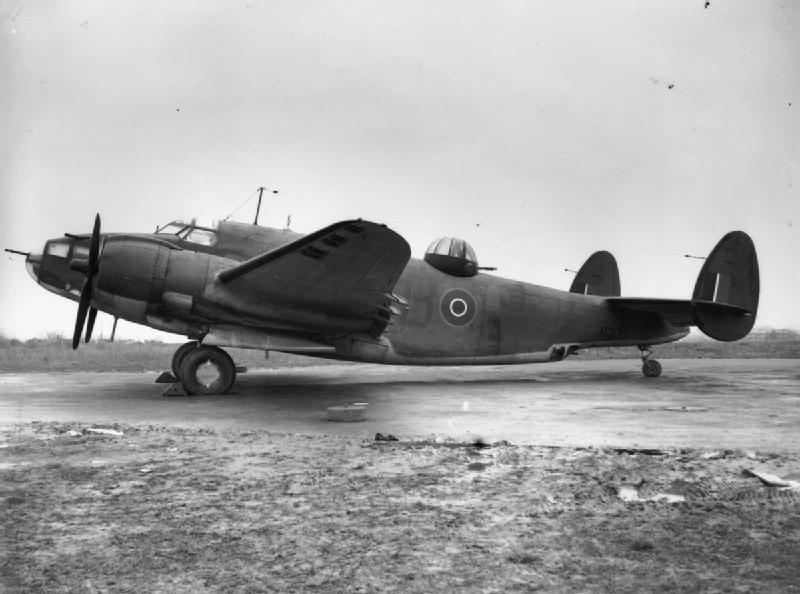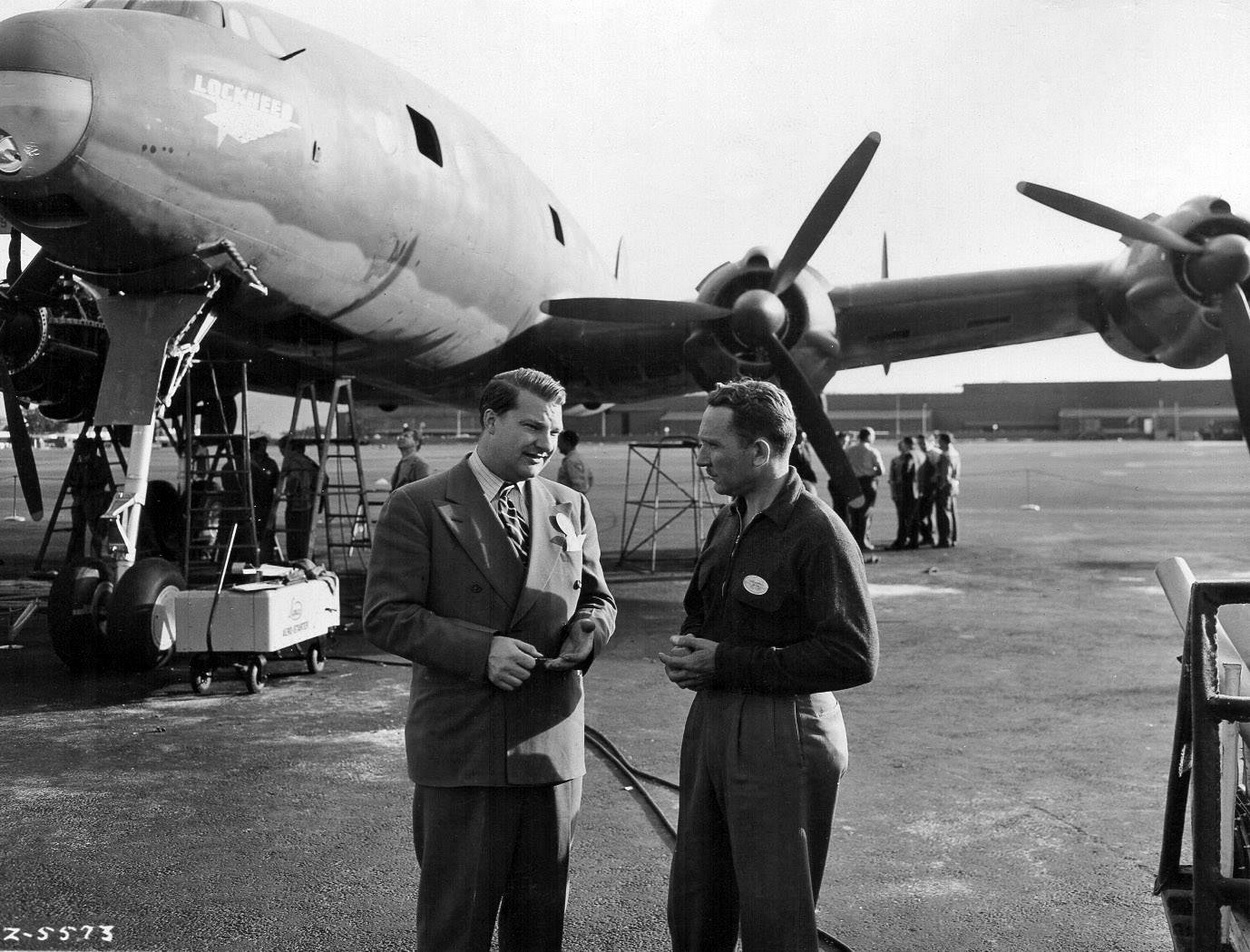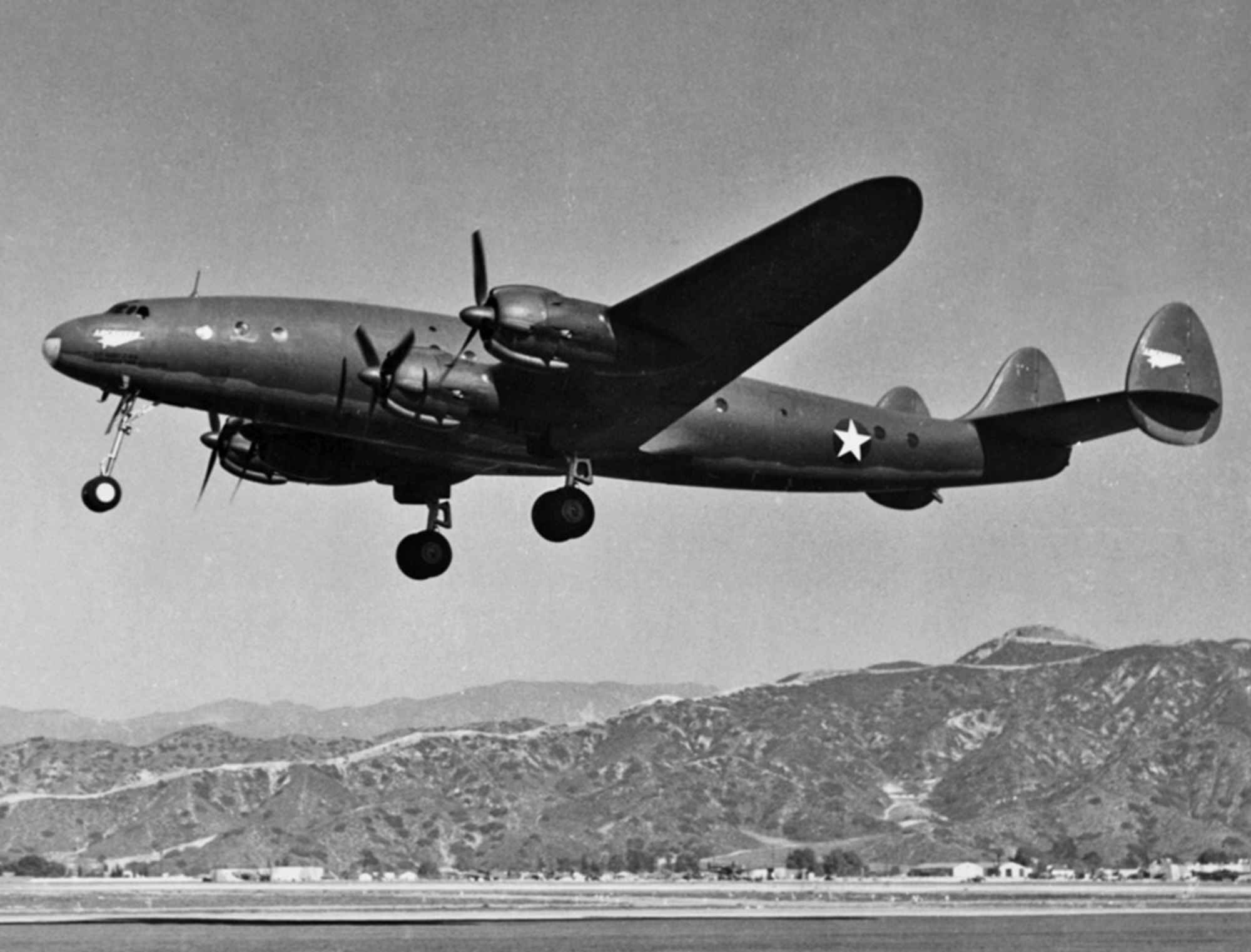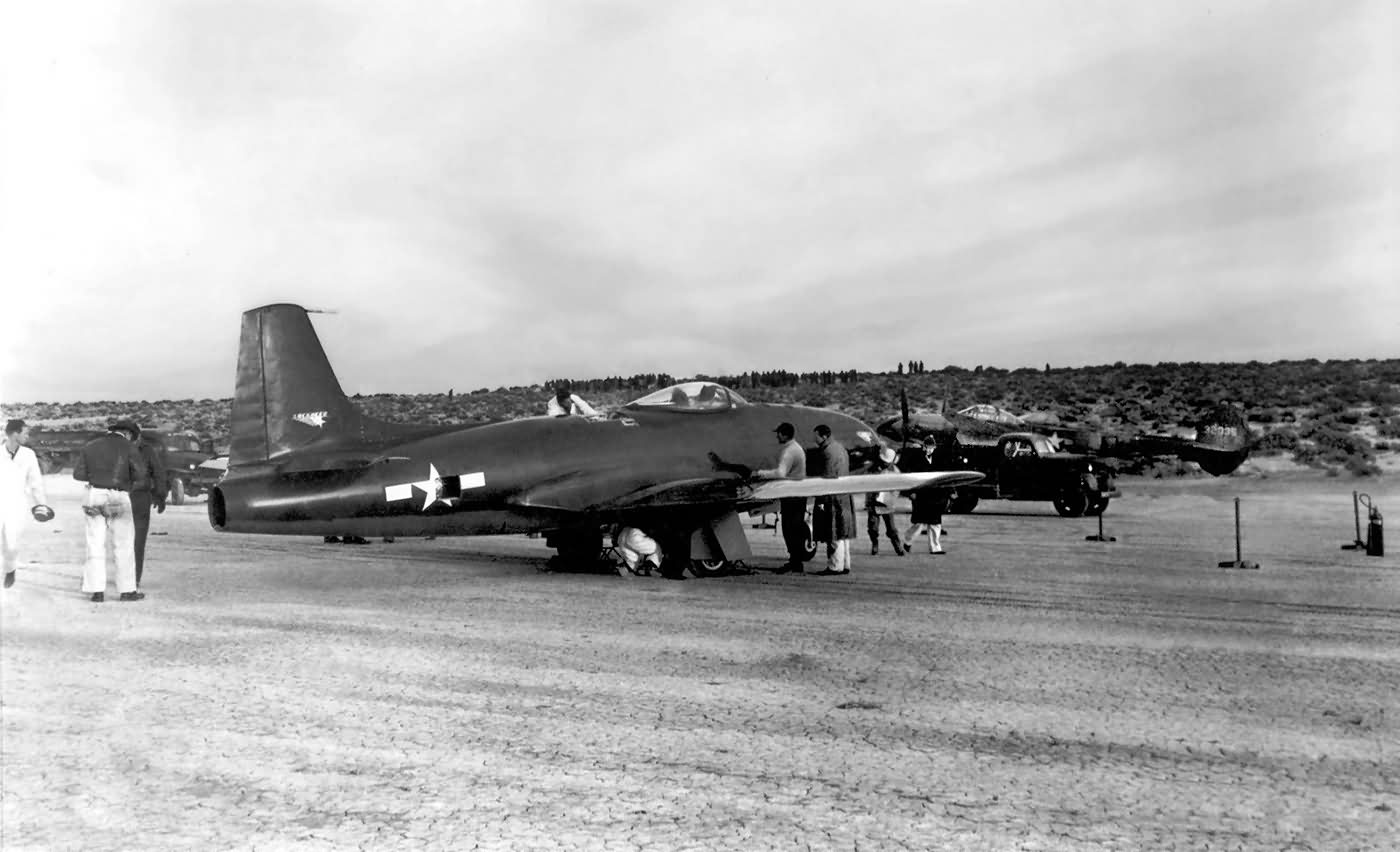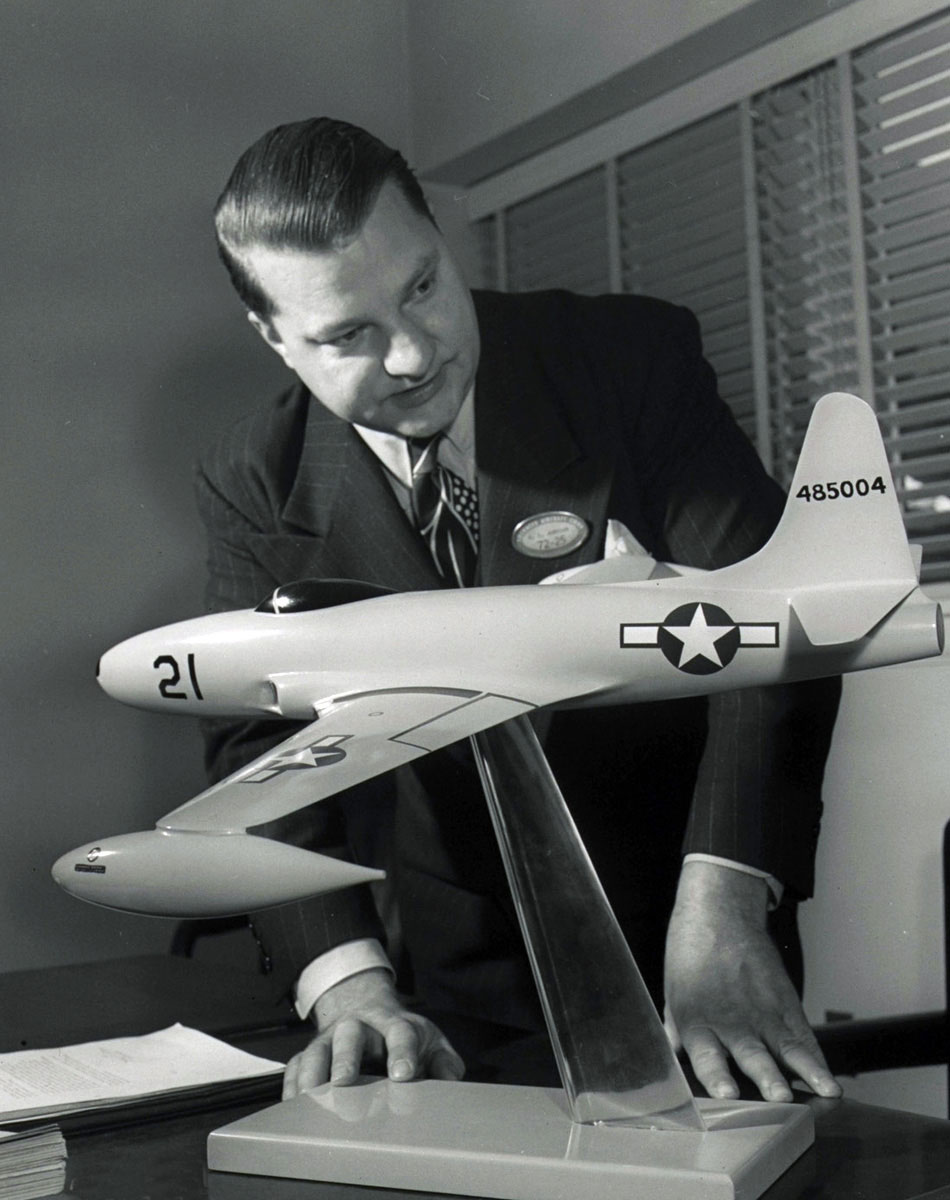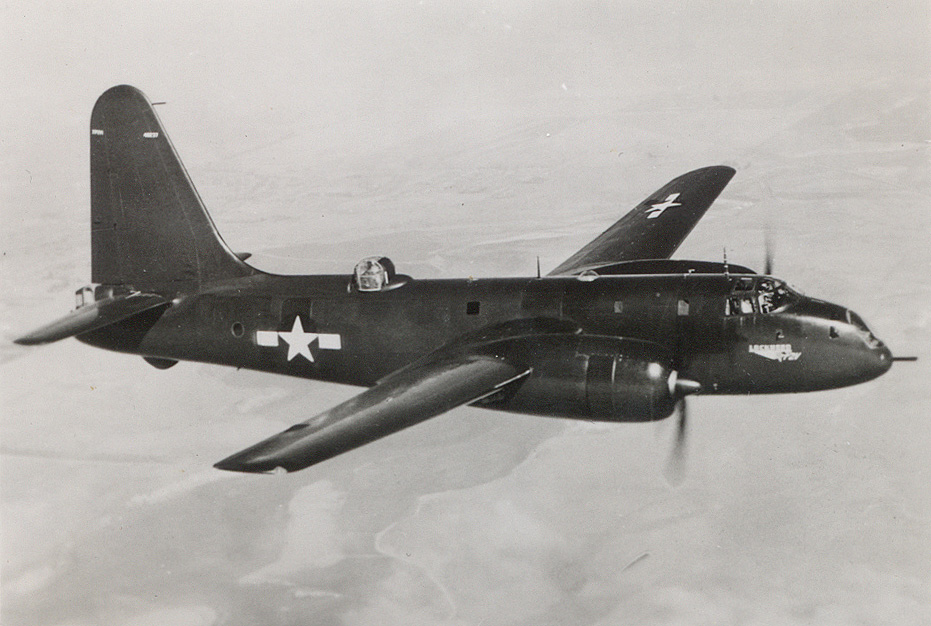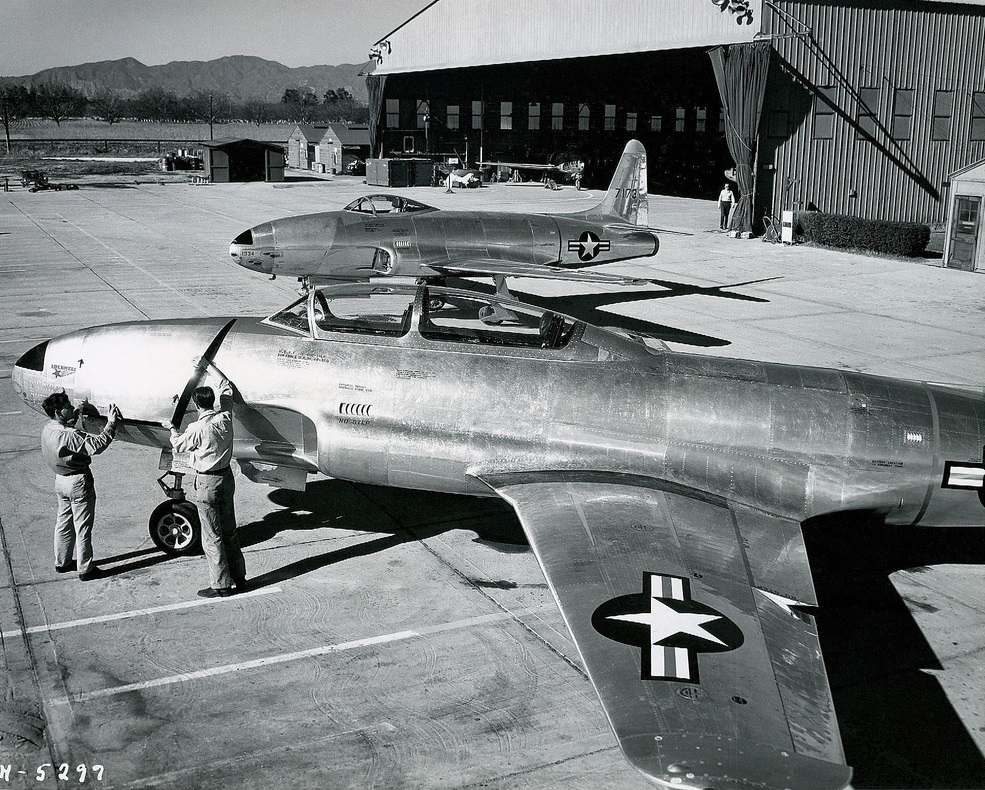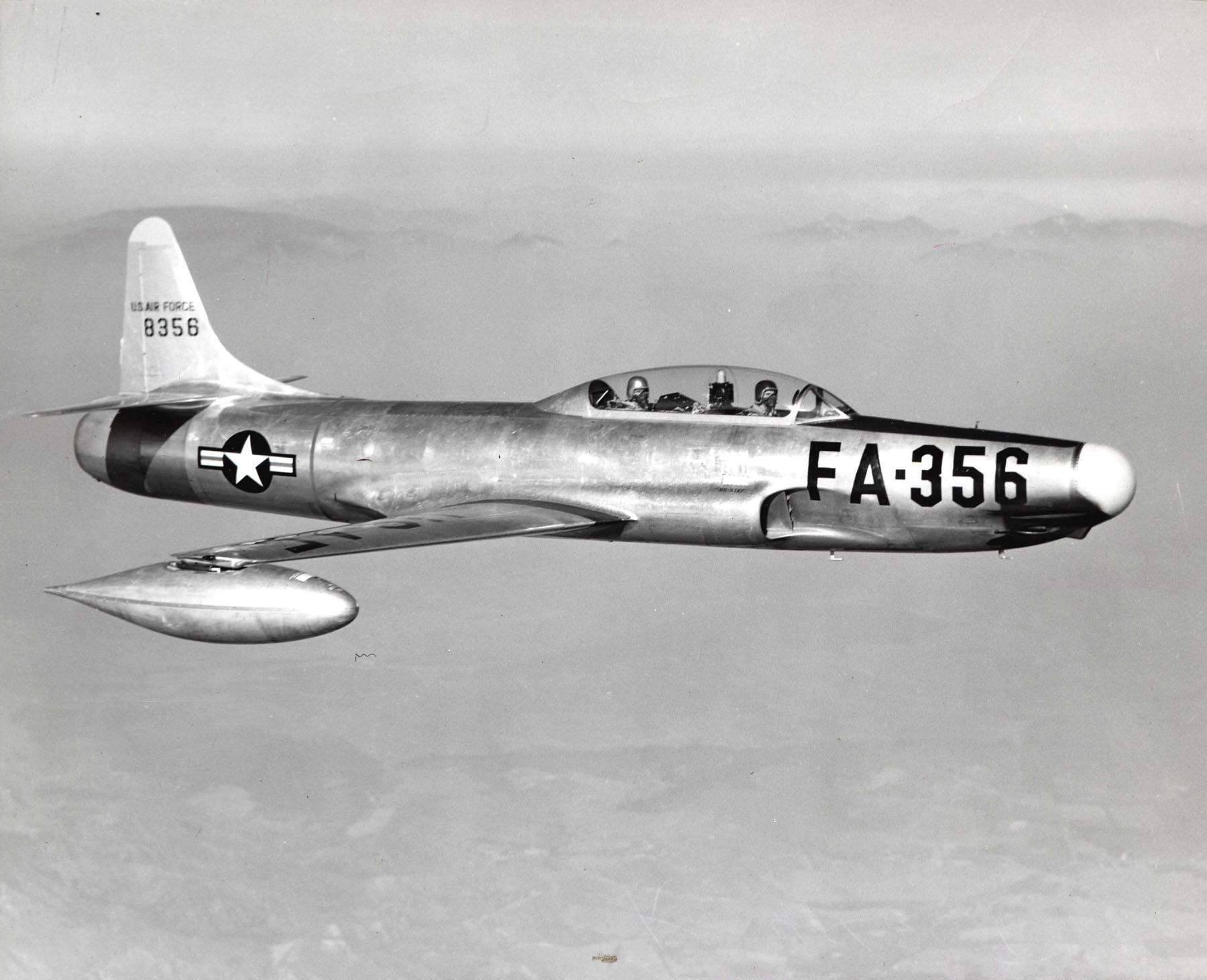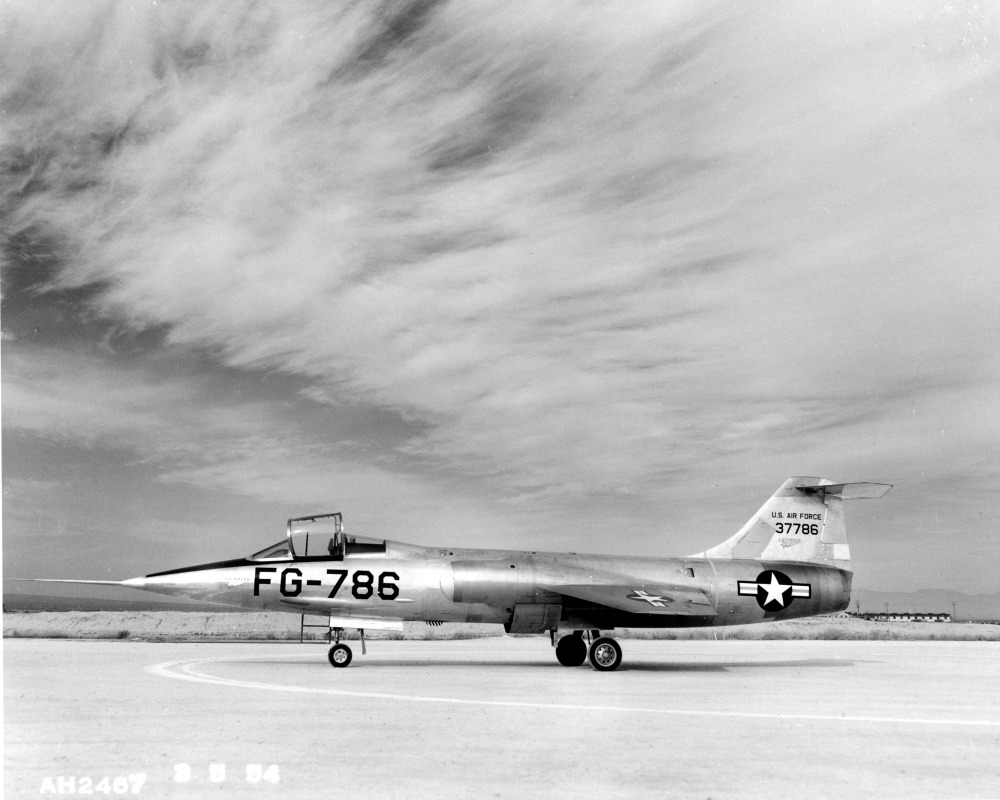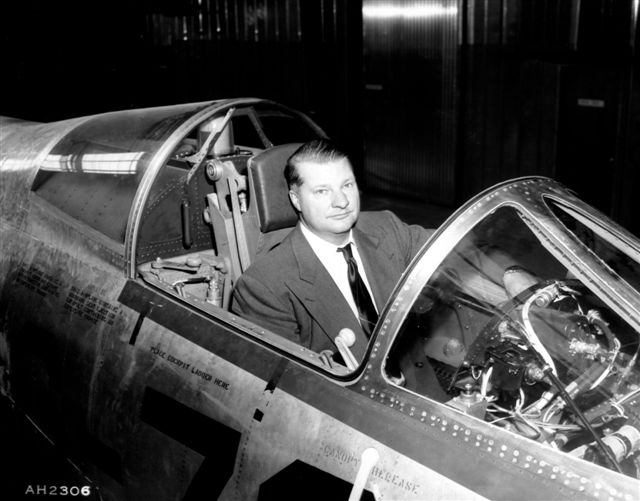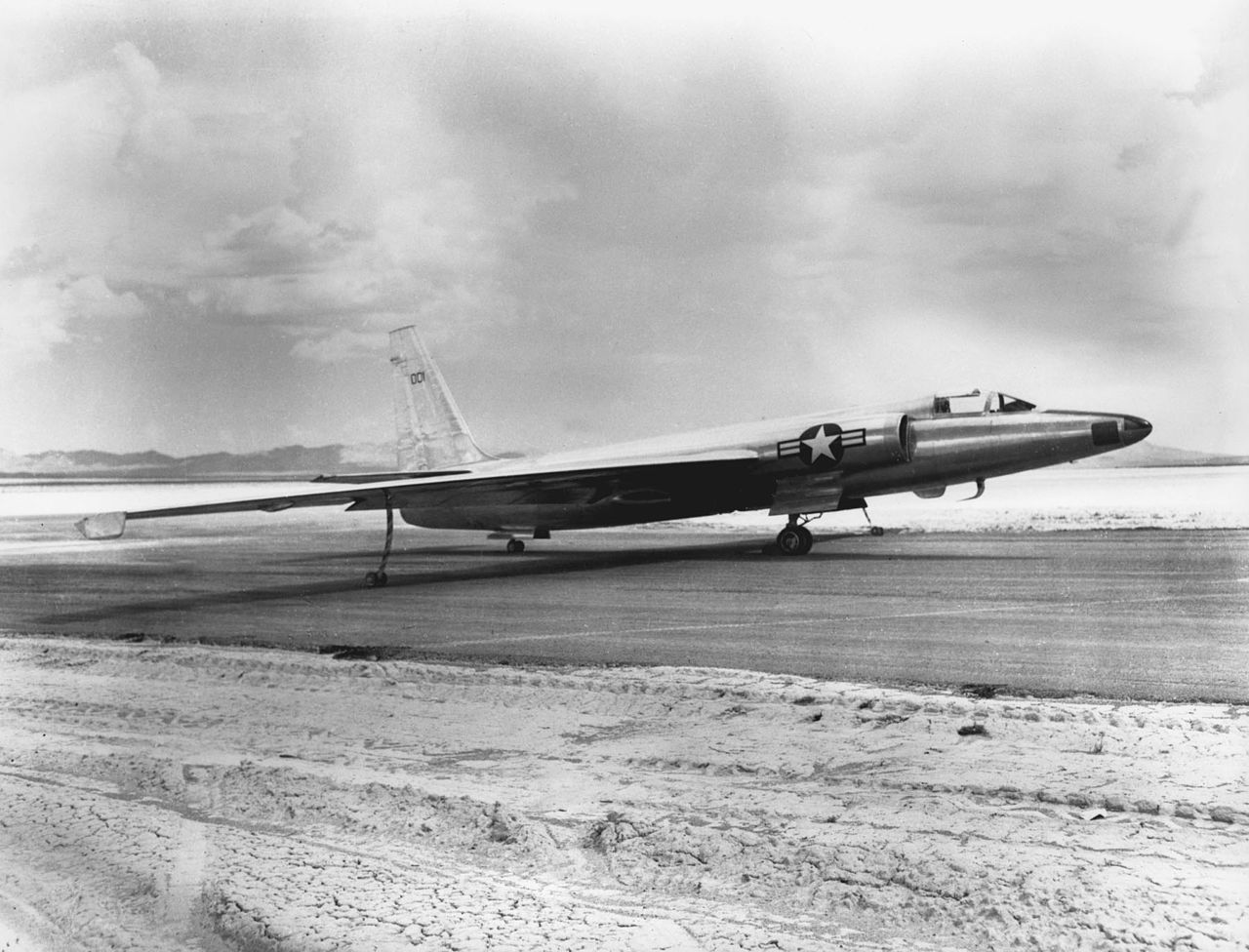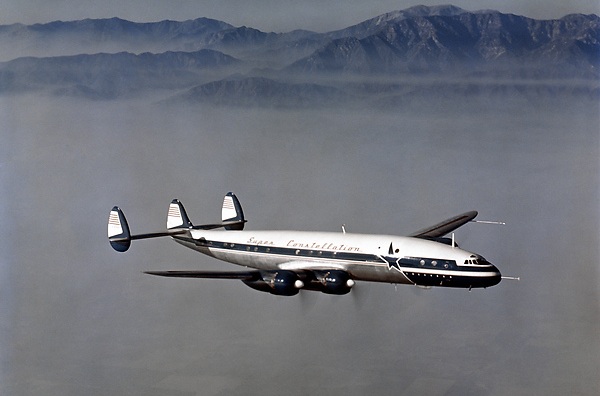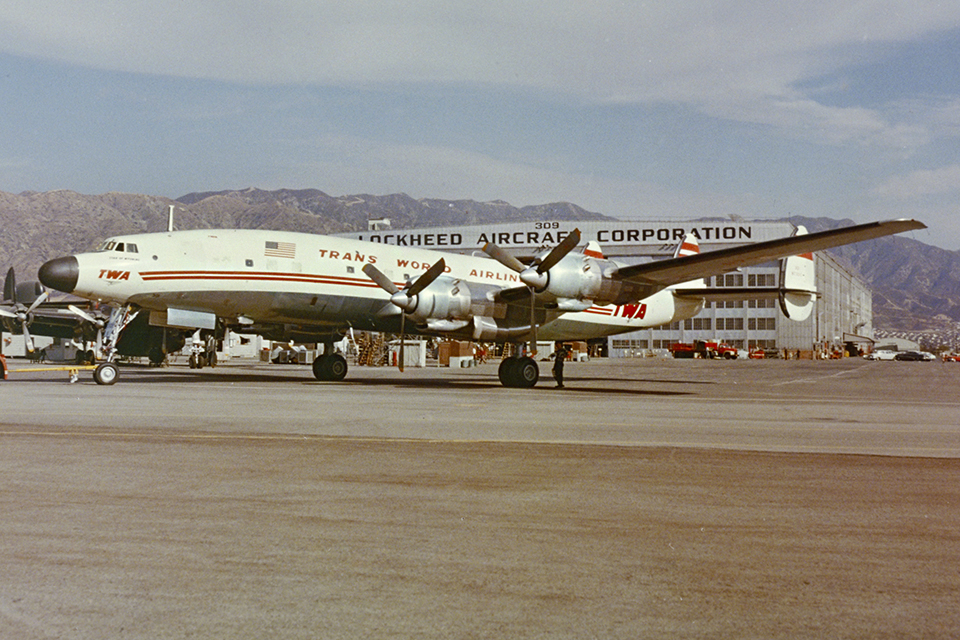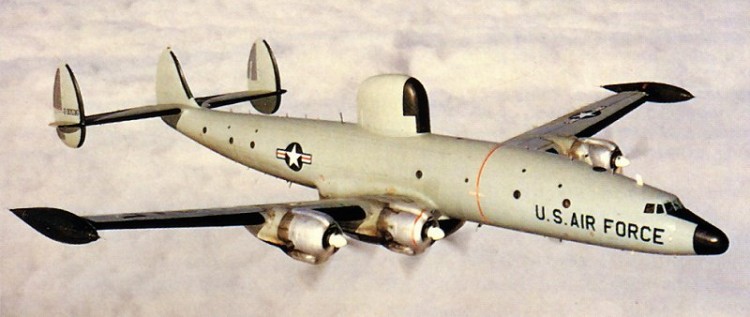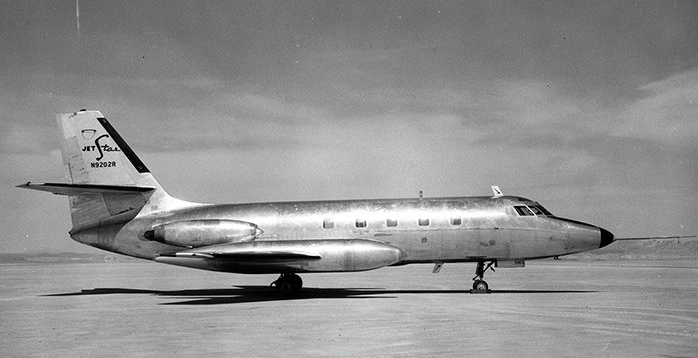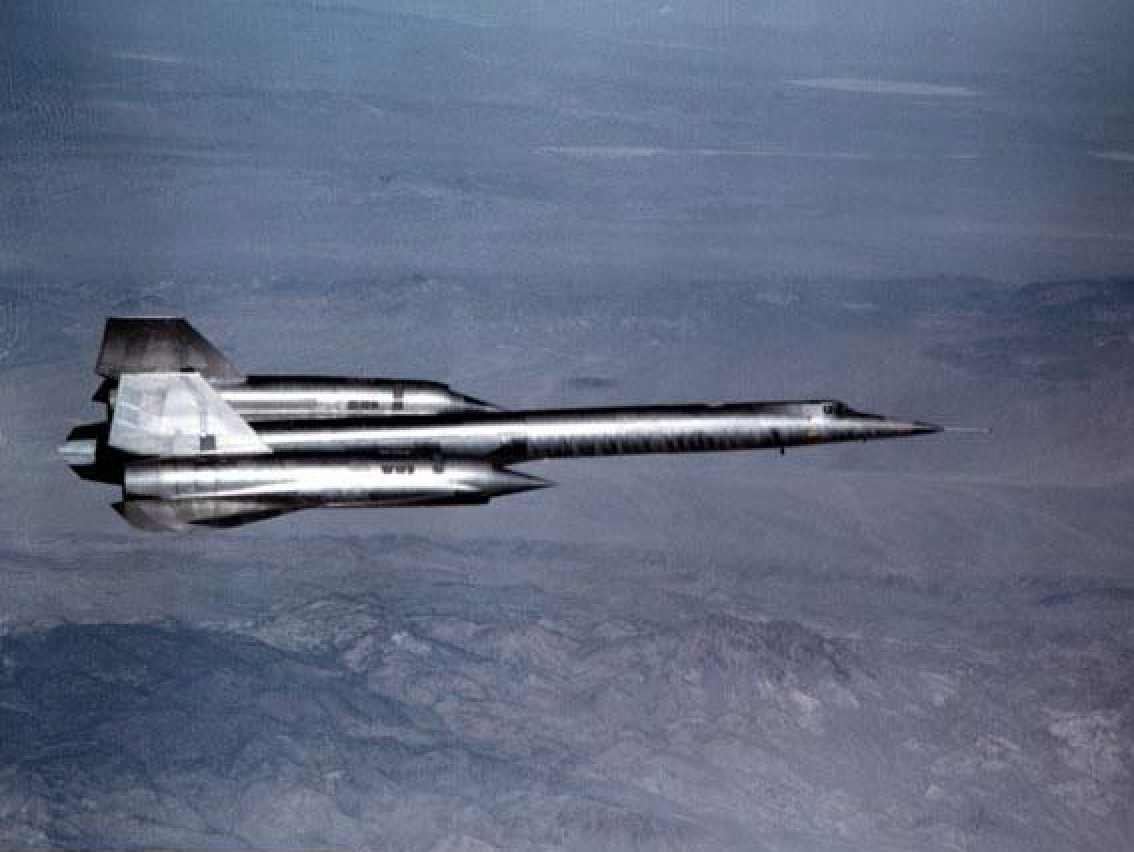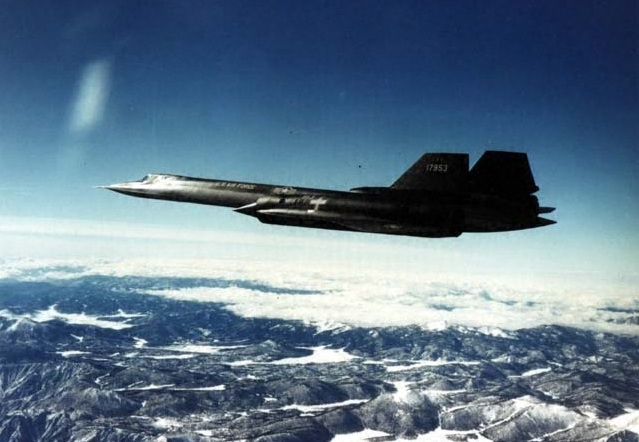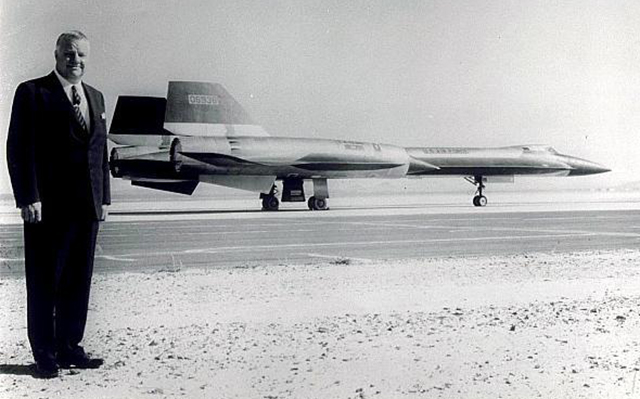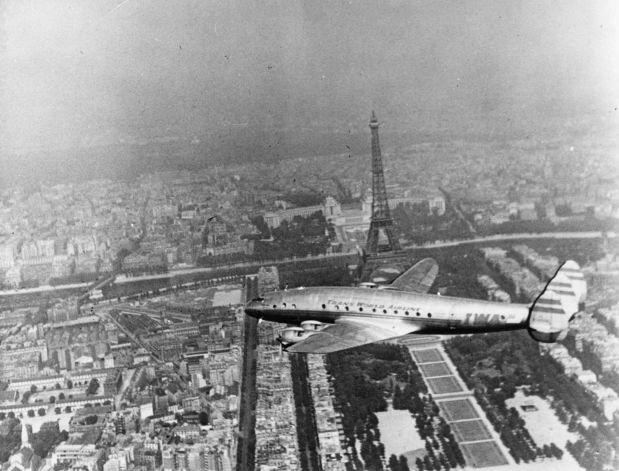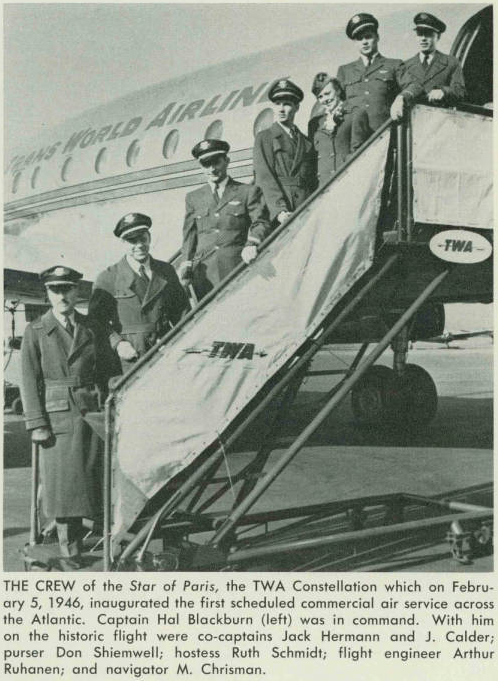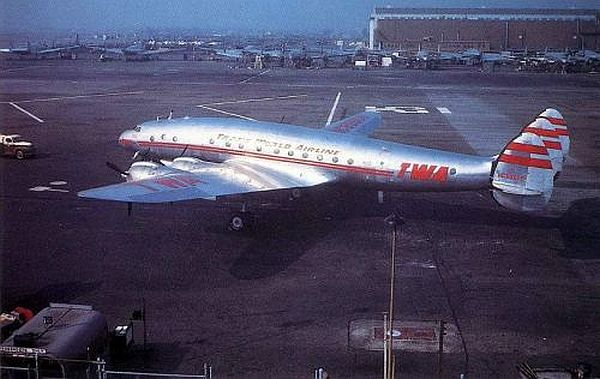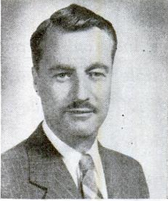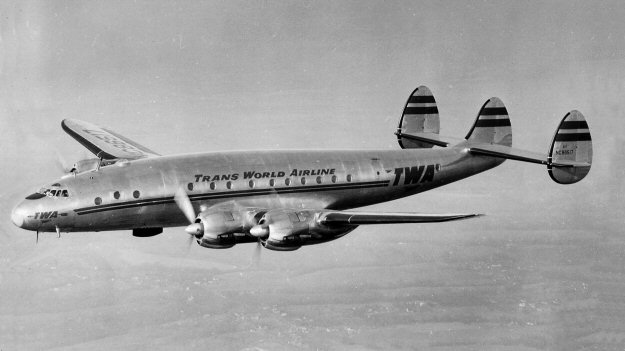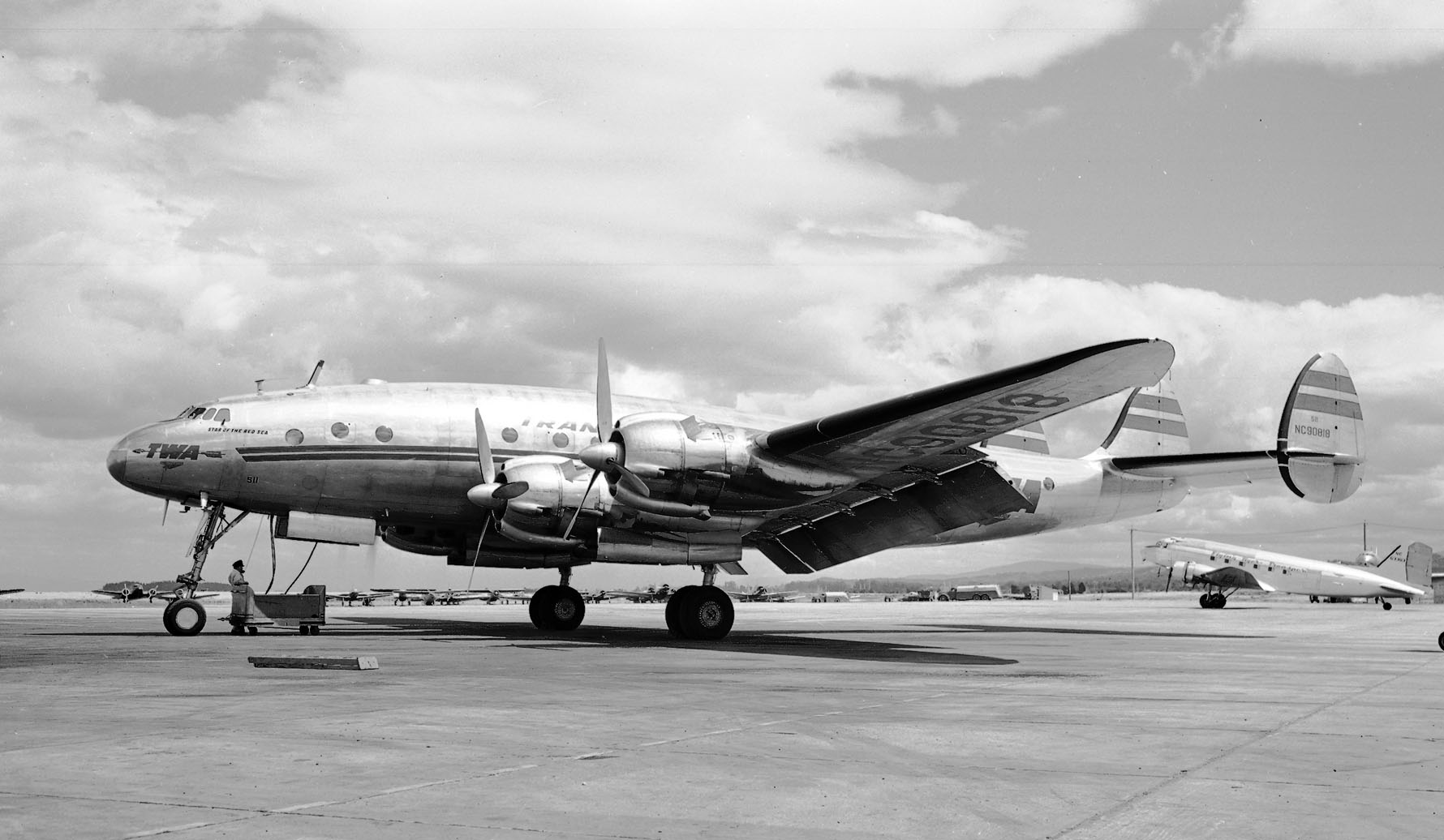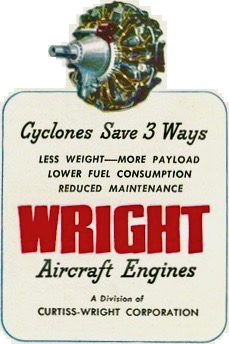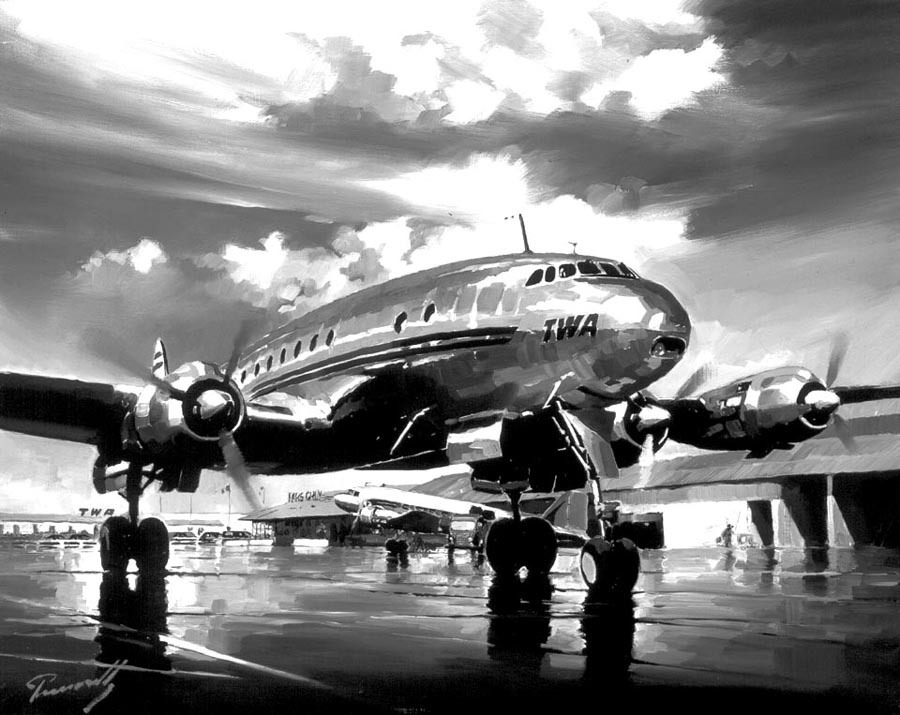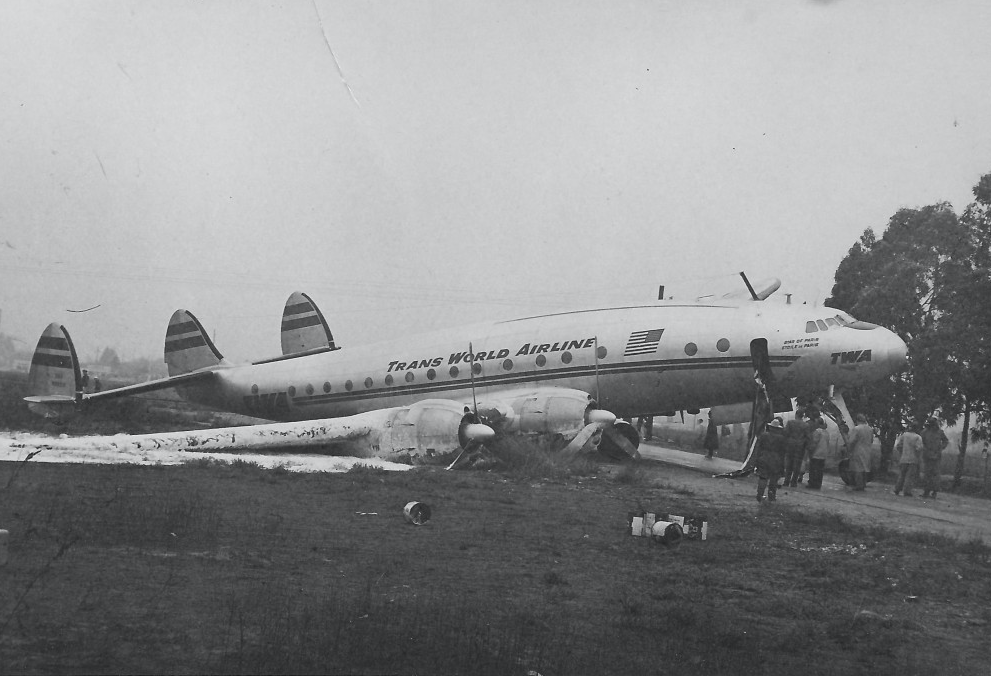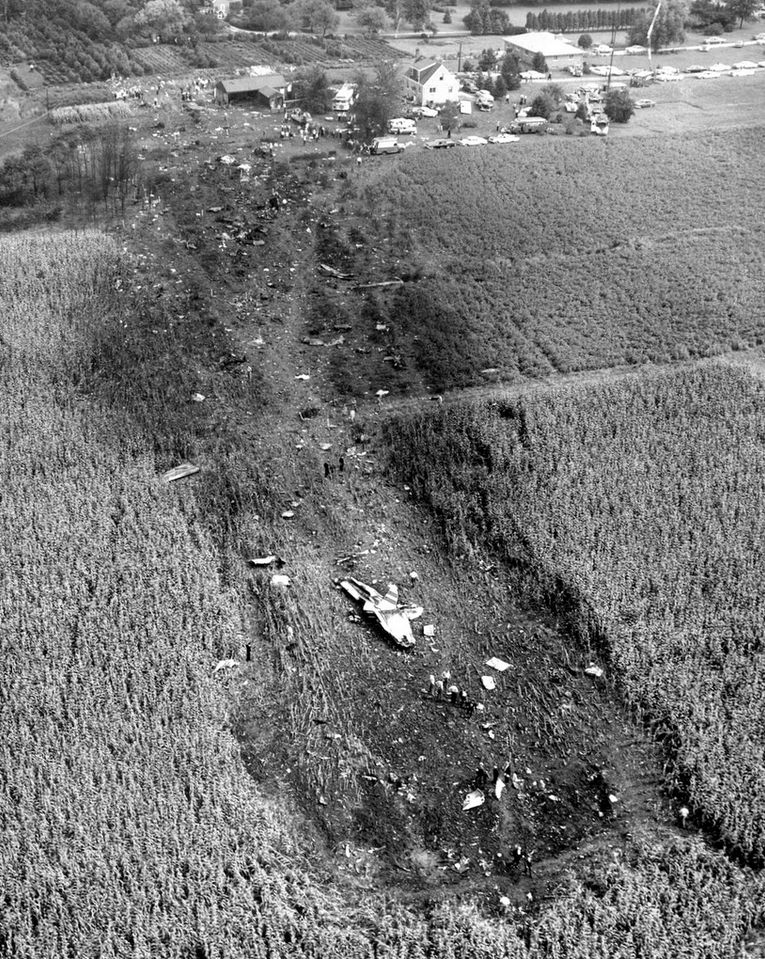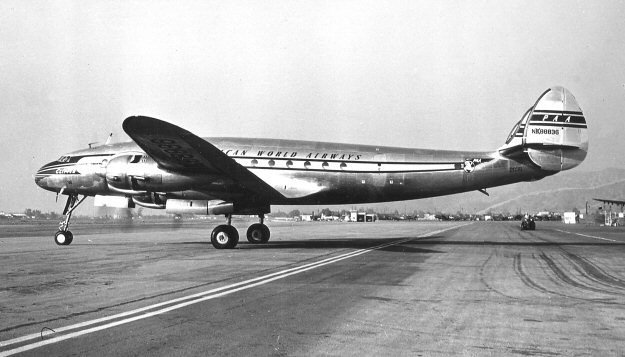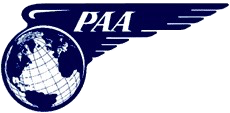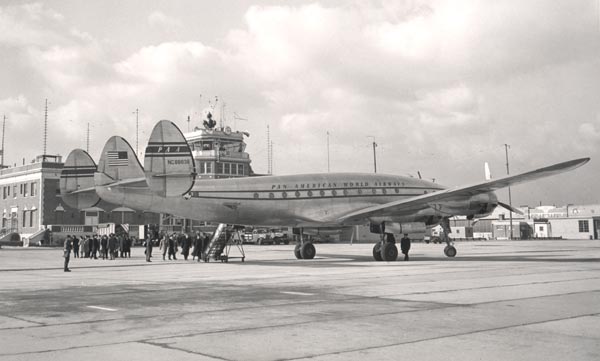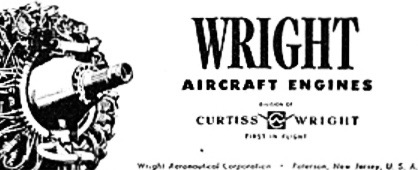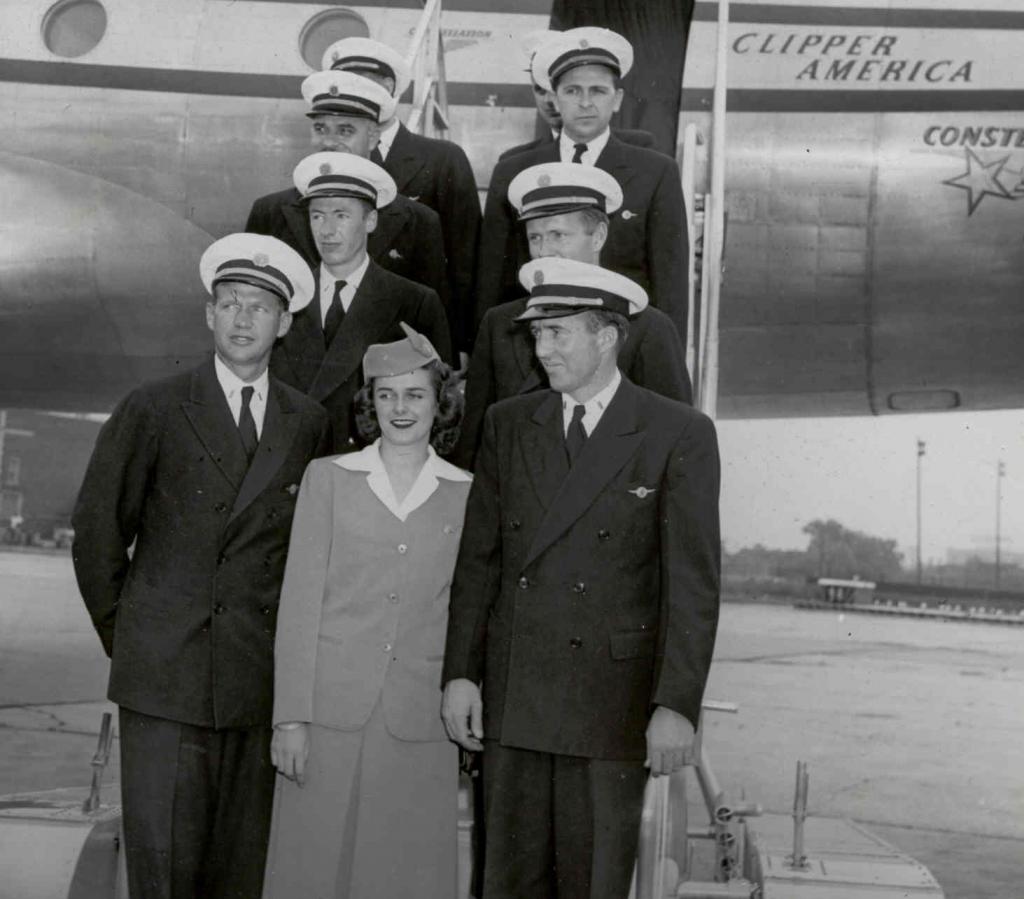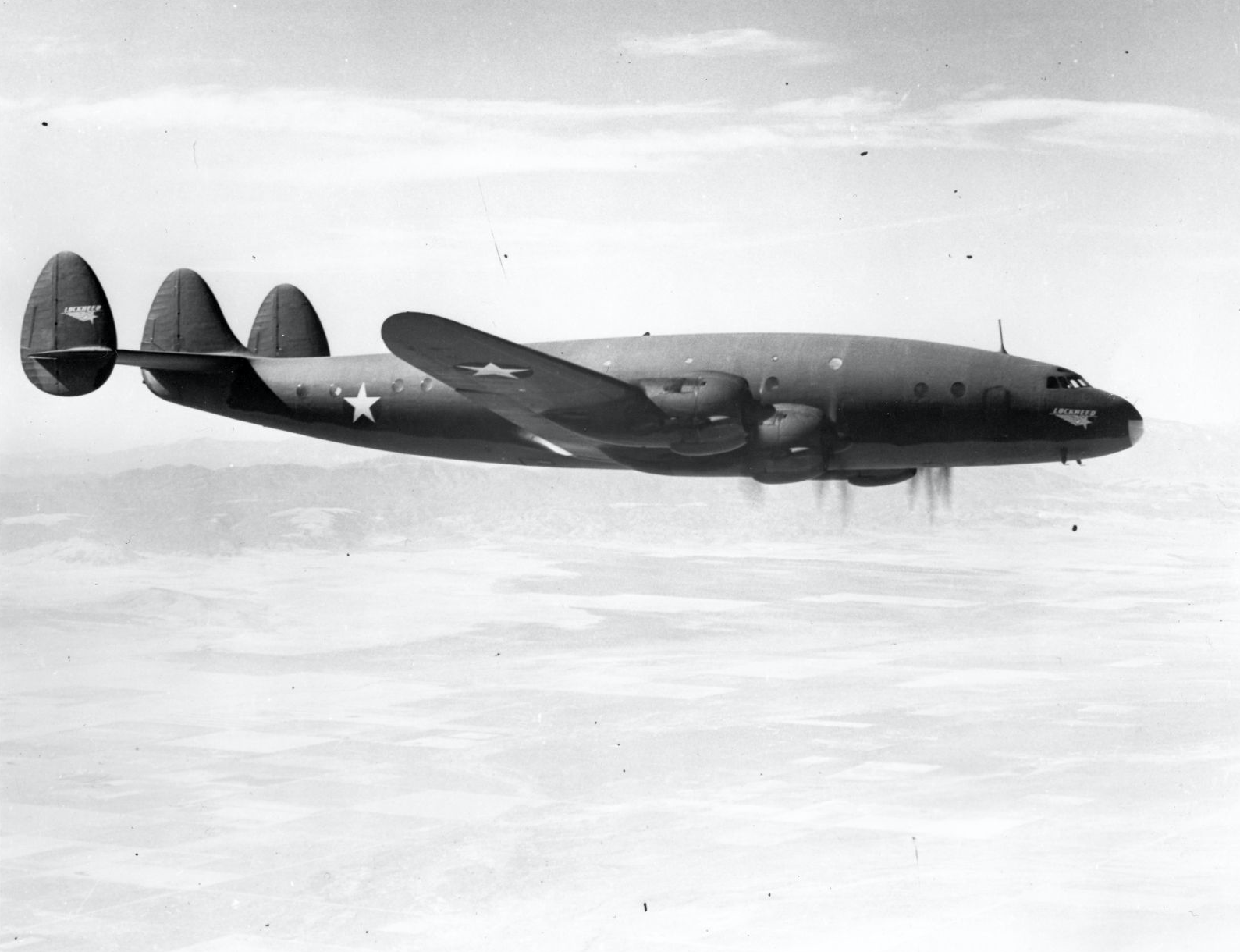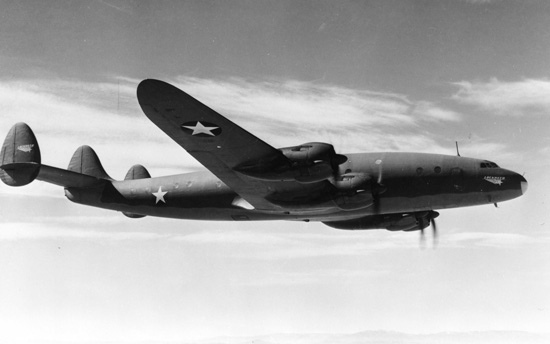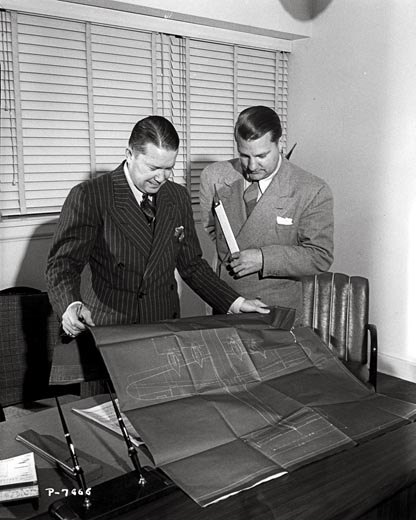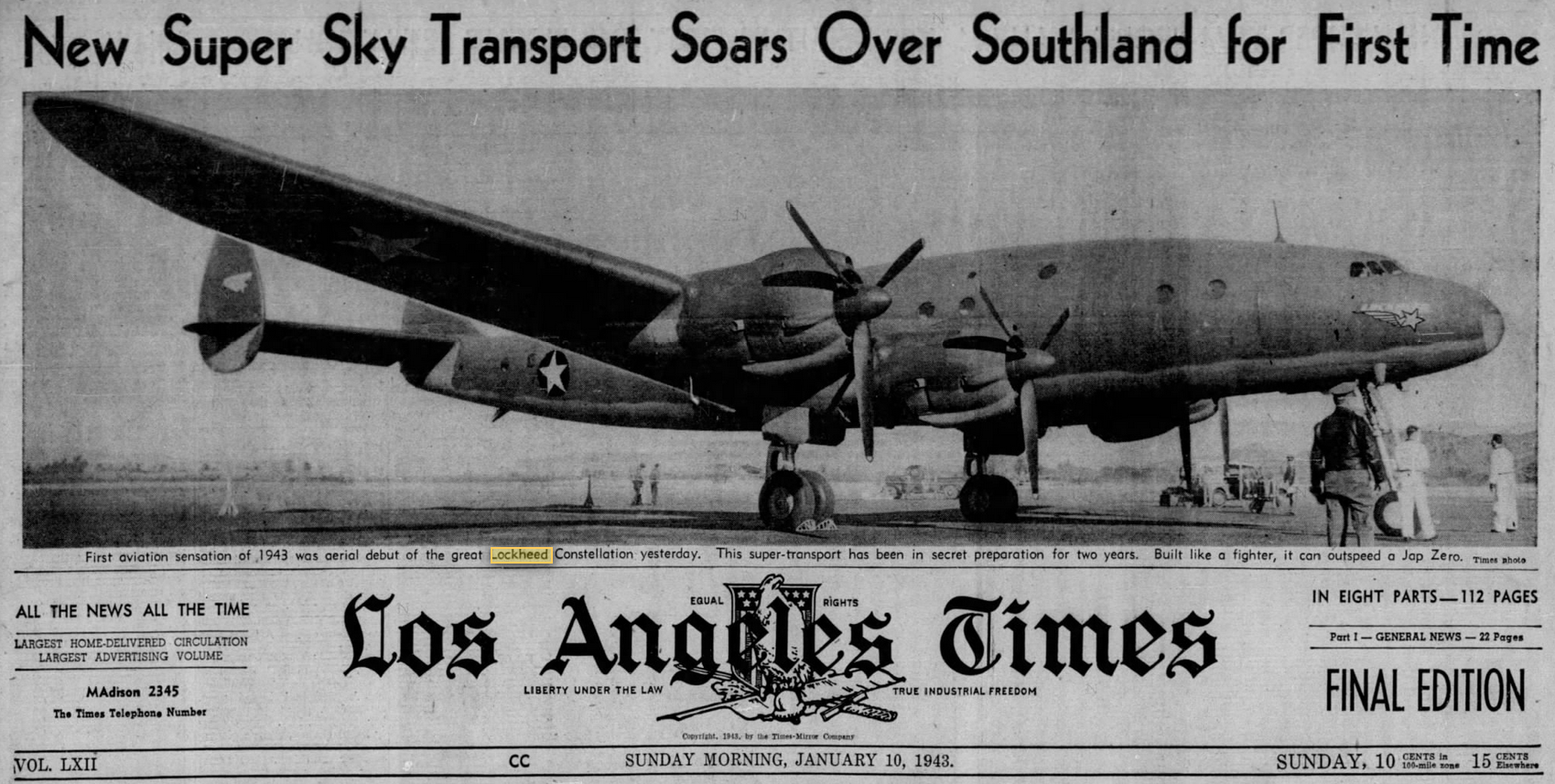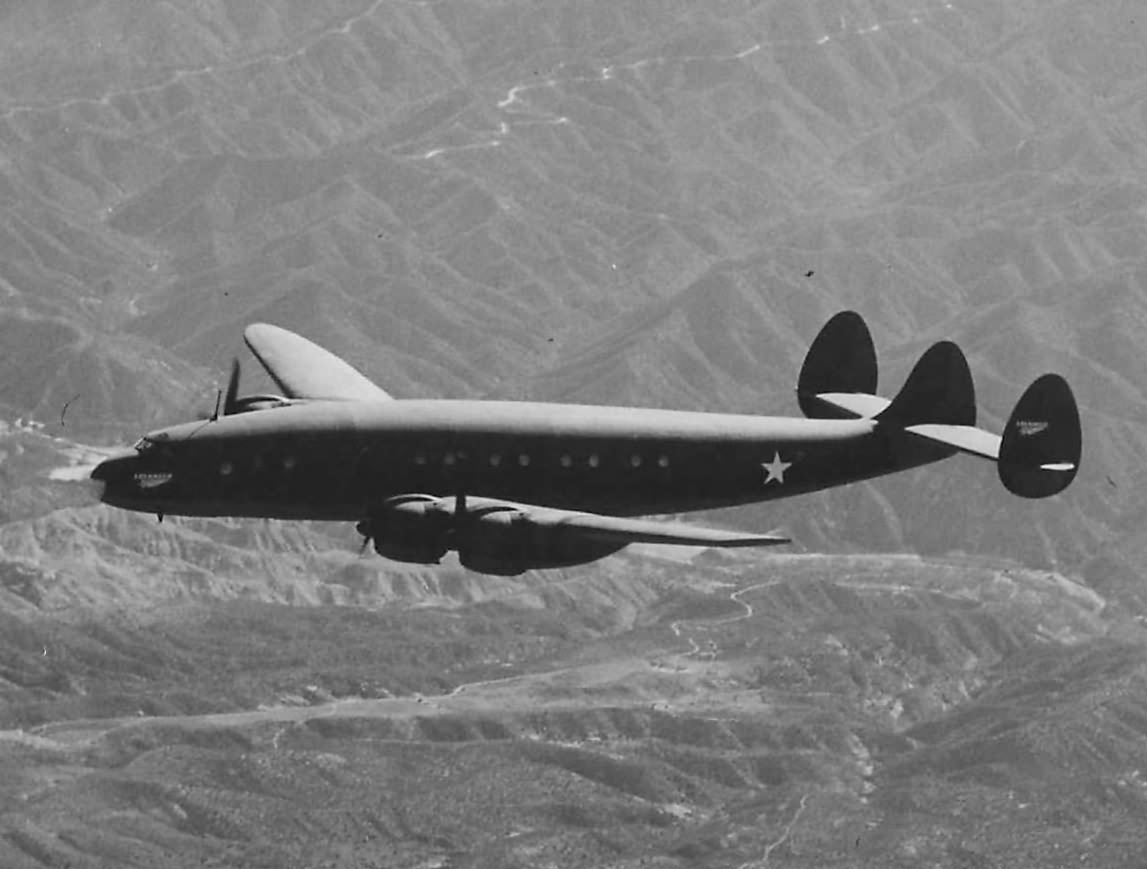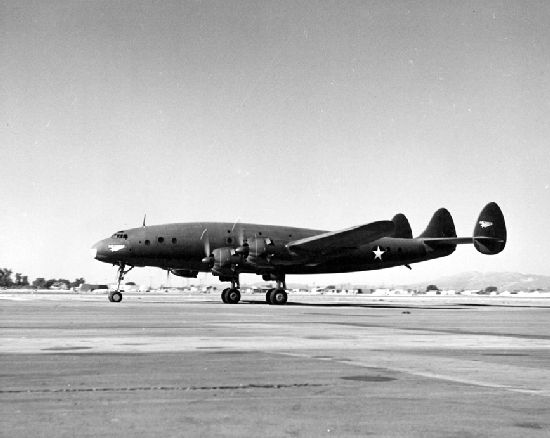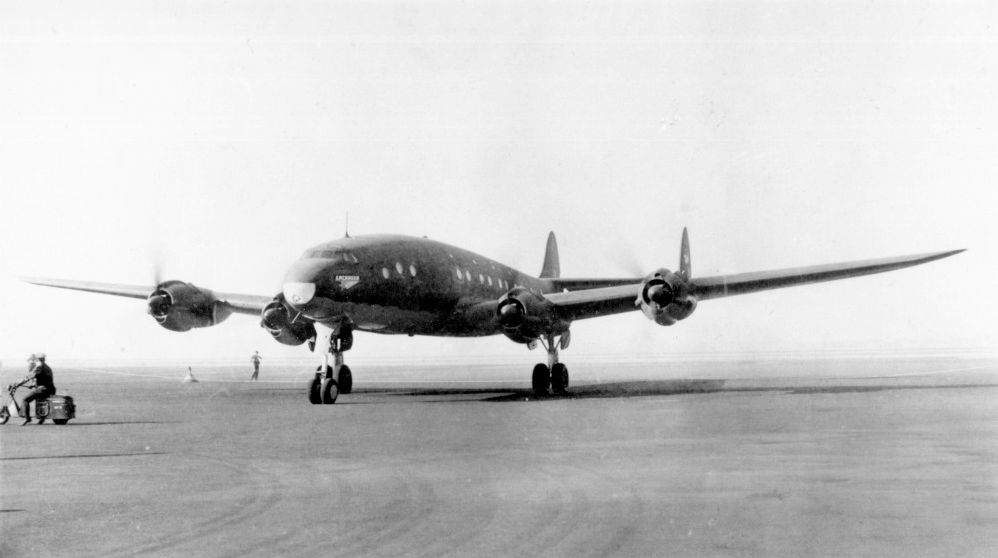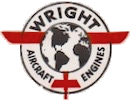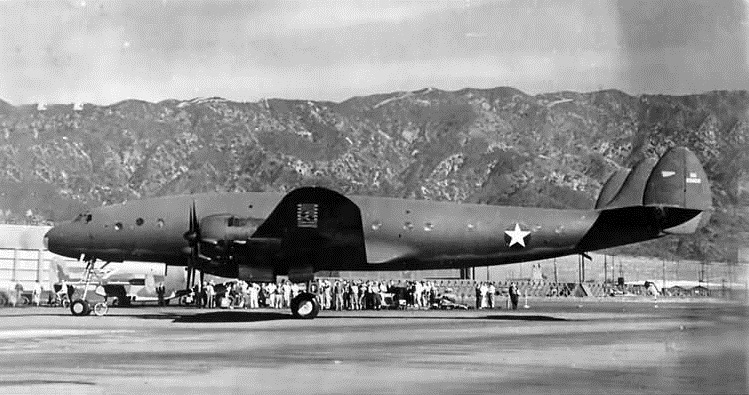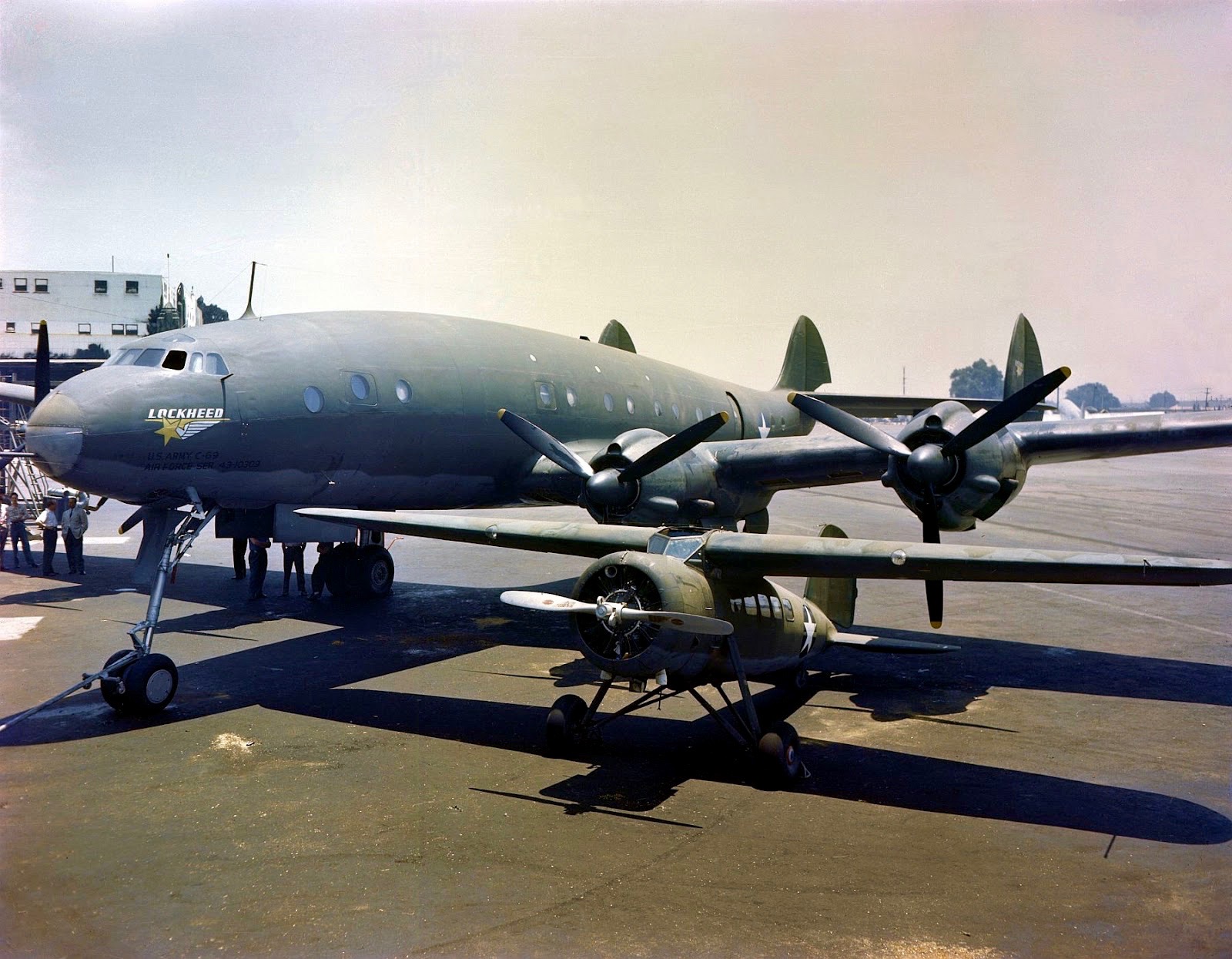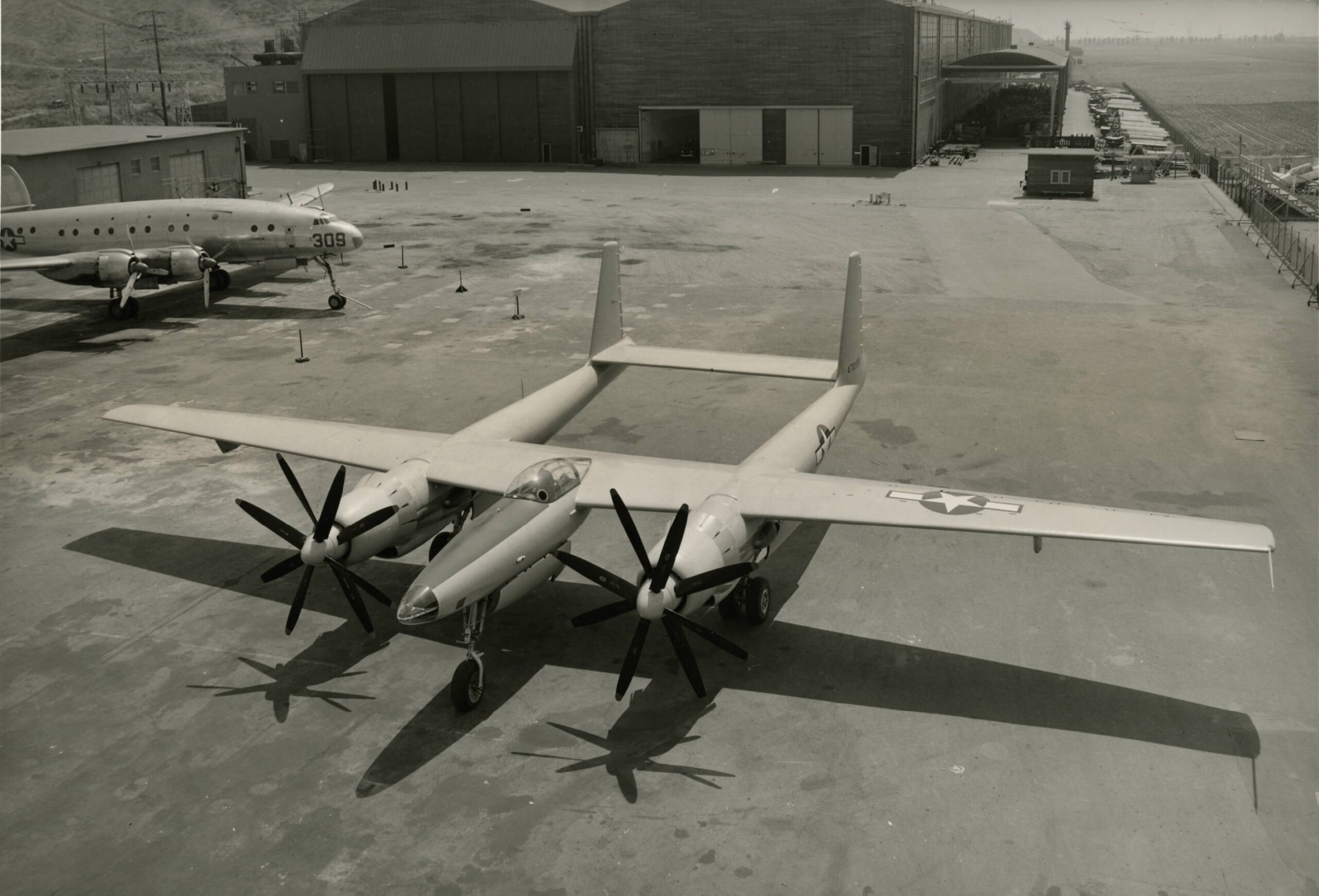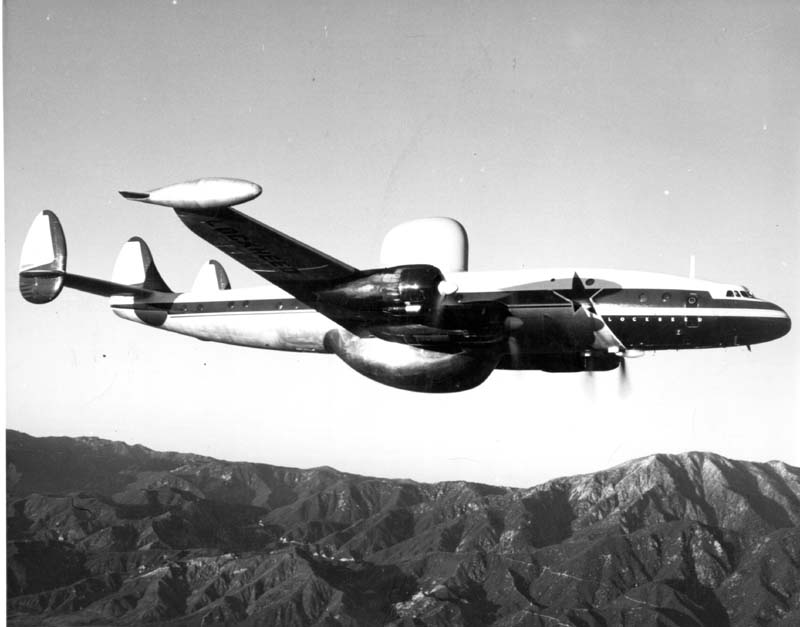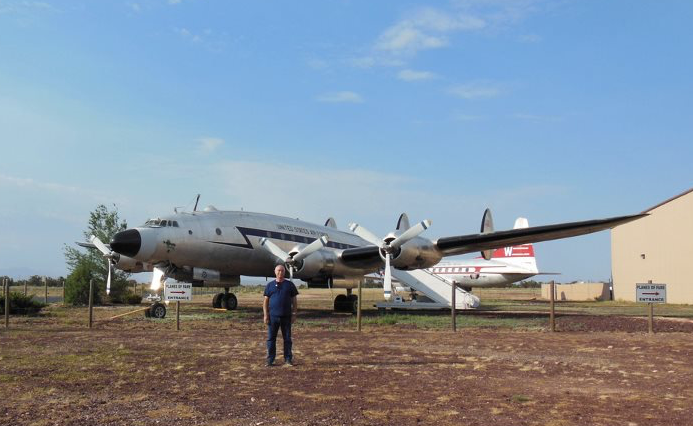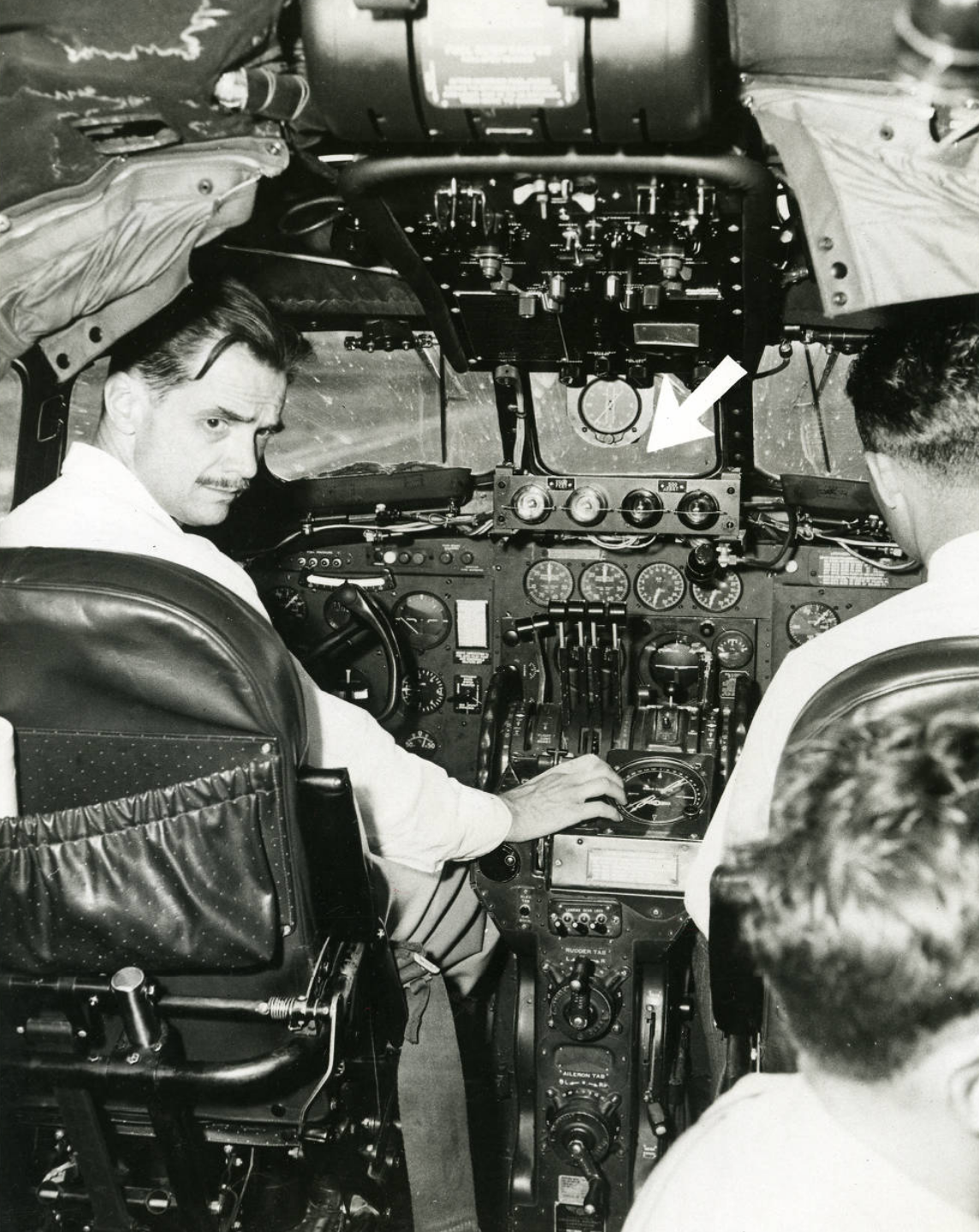
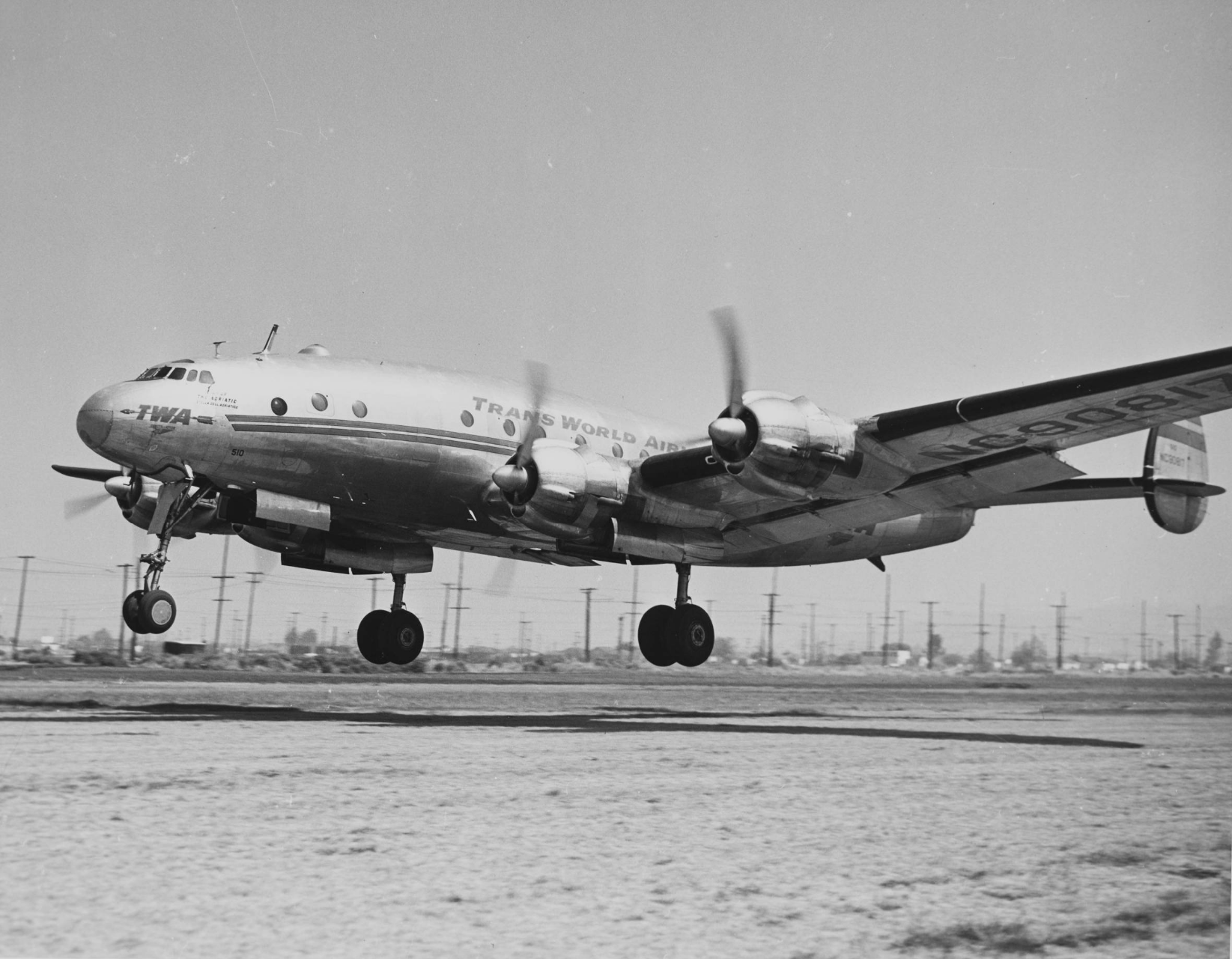
2 May 1947: Record-setting aviator Howard Robard Hughes, Jr., demonstrated an early form of terrain avoidance radar equipment which had been installed on his Transcontinental and Western Airlines Lockheed L-049 Constellation NC90817, Star of the Adriatic.
The Los Angeles Times reported:
Howard Hughes Tests Air Robot
Howard Hughes, manufacturer-pilot and chief stockholder in Trans World Airline, yesterday demonstrated a 16-pound radar device which he believes will act as a “seeing-eye” for transport aircraft flying in darkness or bad weather and prevent a substantial share of airline crashes.
Using one of T.W.A.’s 45-ton Constellations, Hughes personally piloted a radar-equipped plane over—and sometimes practically in—the San Gabriel Mountain canyons north of Mt. Wilson to give visiting aeronautics writers a firsthand peak into the device’s operations.
Warning Lights
The apparatus consists of a robot-radar transmitter and receiver and a set of warning lights and buzzers. The transmitter emits 400 strong electronic pulses every second; the receiver catches them on the “bounce” at the rate of 1000 feet in one-millionth of a second.
Set at 500 and 2000 feet, the device thus gives audio-visual warning when the plane comes within range of objects or terrain at those distances. The “beam” itself is a pulsating cone showing obstructions within a 150-degree arc.
Climb Executed
Hughes demonstrated that the Connie, with its 8800 horsepower, can easily execute a turning climb out of a box canyon inside the 2000-foot warning range given by radar.
All T.W.A. planes will have this device within five weeks, he said, thus becoming the first radar-outfitted commercial transports. In production, the equipment can be made for $130 a set. It will be available “if wanted” to other airlines, he added.
—Los Angeles Times, Vol. LXVI, May 2, 1947. Part I, Page 2, Column 4
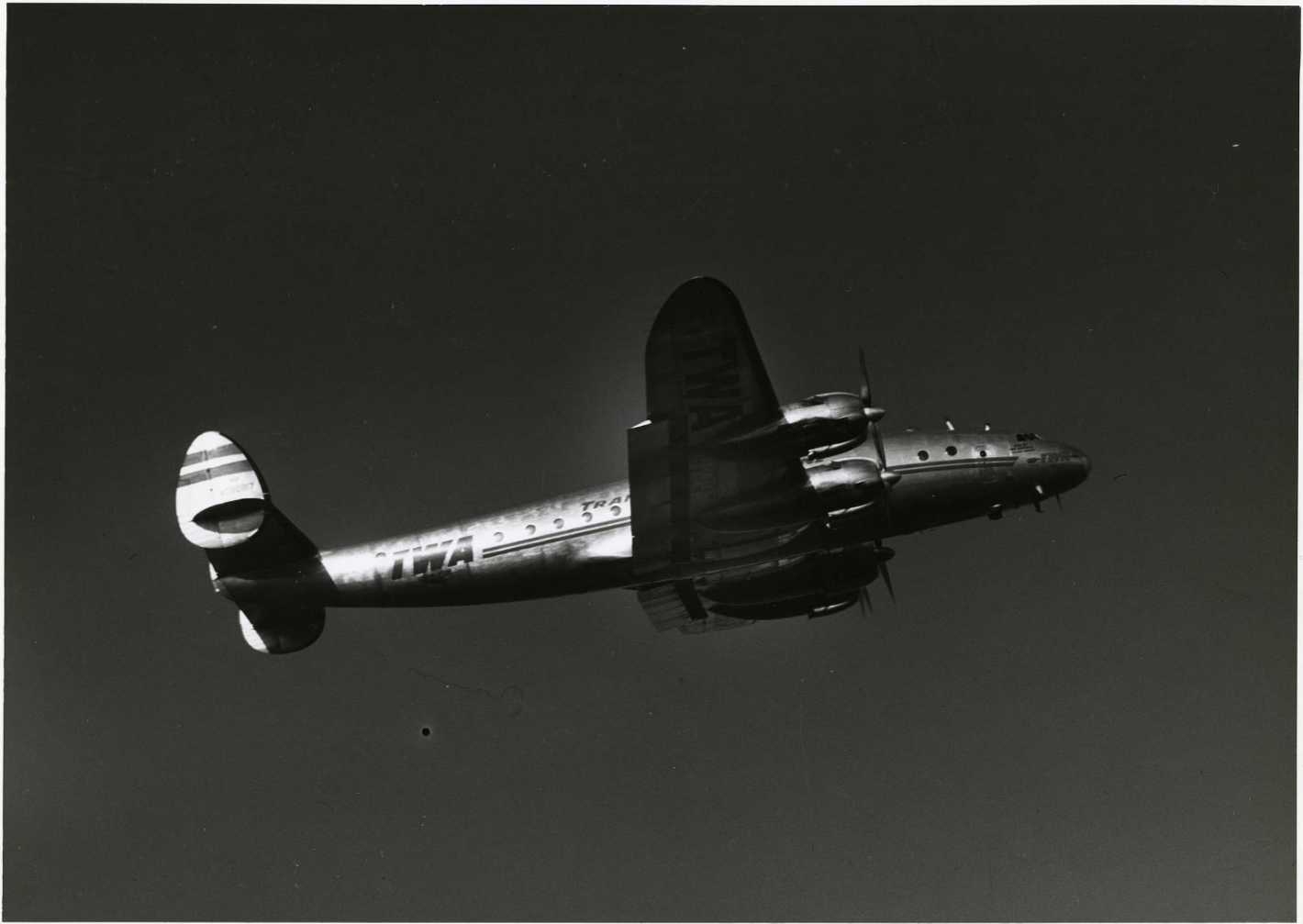
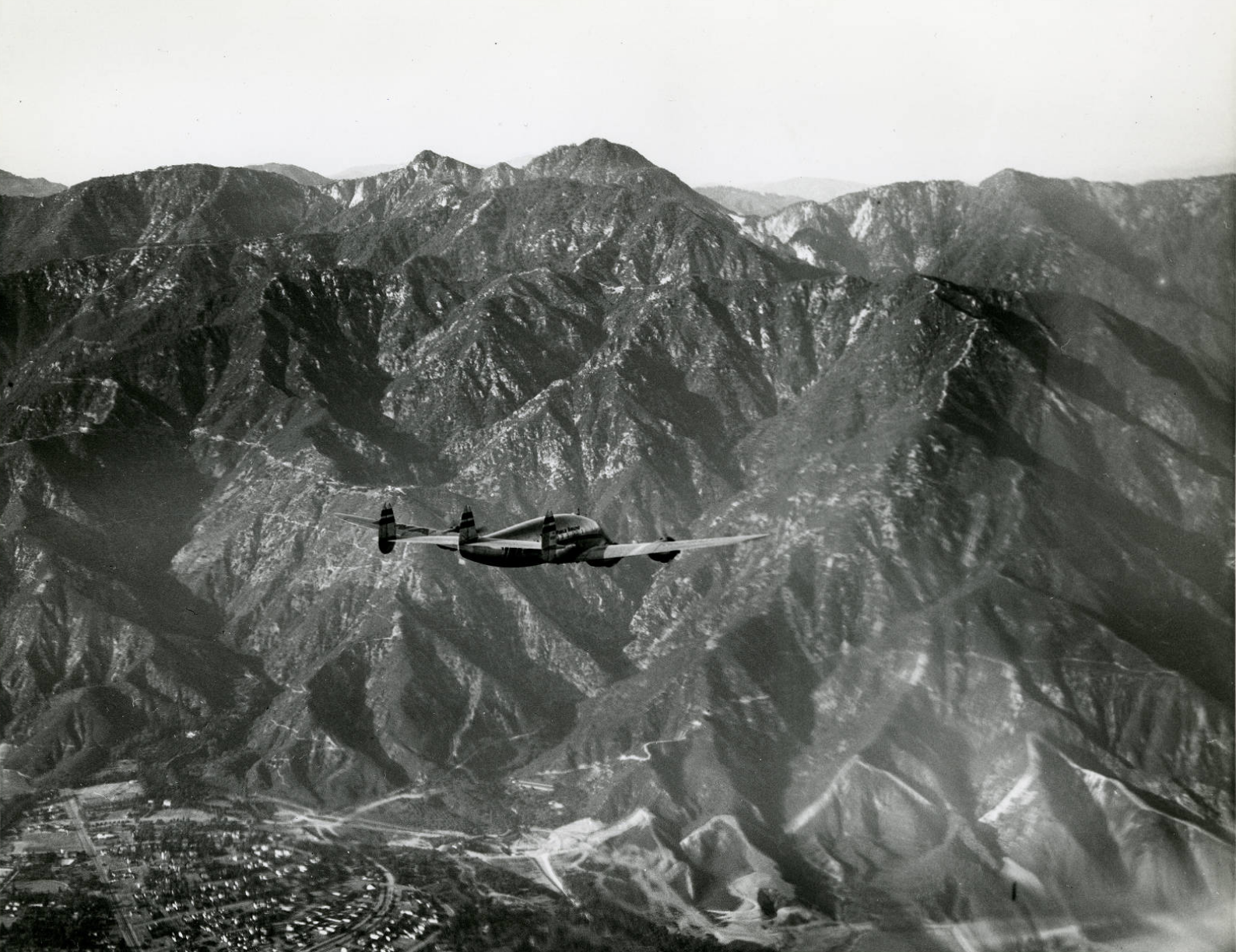
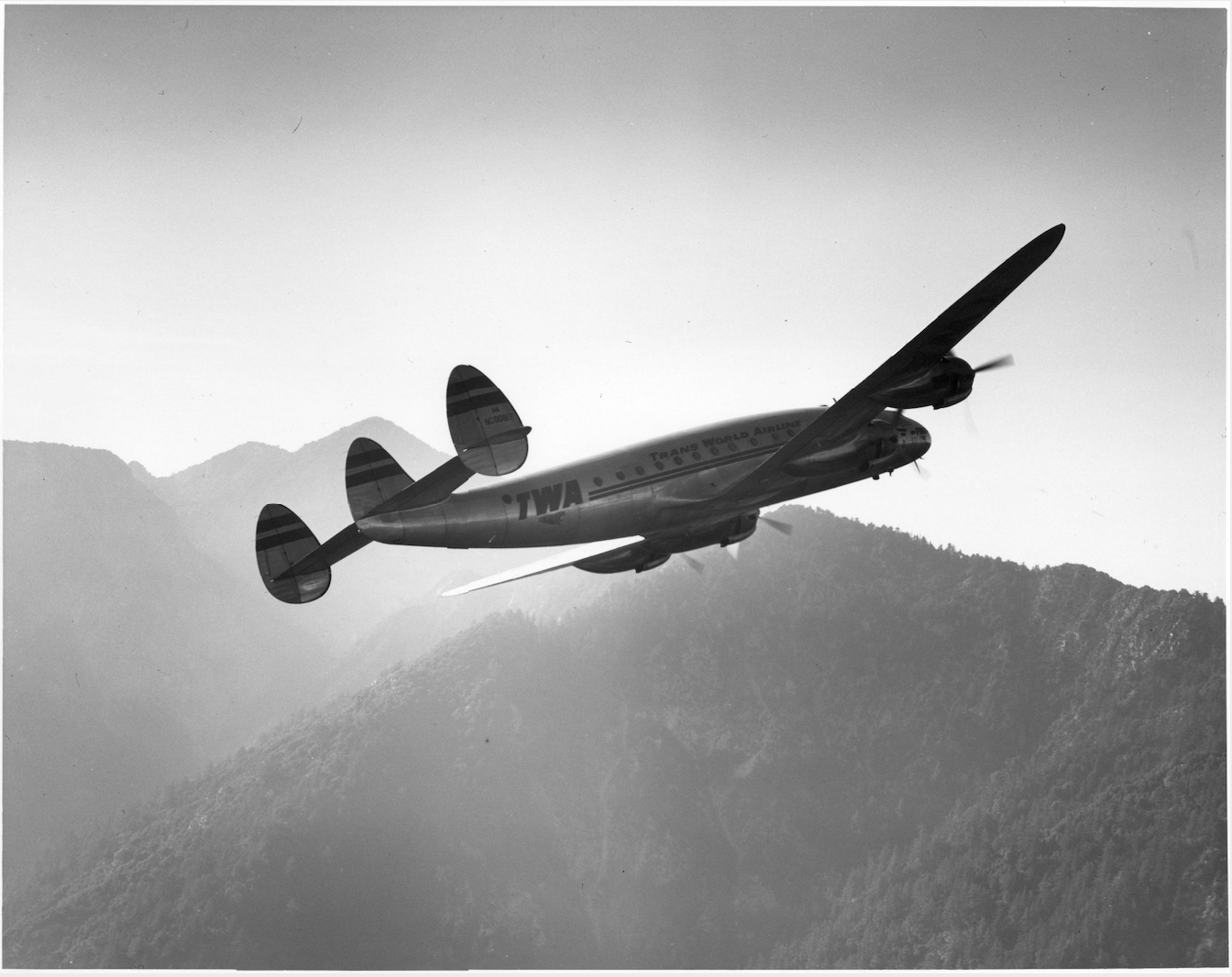
Hughes Demonstrates New Radar Device to Reduce Plane Crashes
By RALPH M. DIGHTON
CULVER CITY, MAY 1 (AP) —Plane builder Howard Hughes today personally demonstrated what he said was the world’s first successful application of war-developed radar to commercial airliners.
In a test flight for newsmen, a miniature radar device was set to flash warnings when the T.W.A. Constellation Hughes was piloting approcahed within 2,000 feet of terrain obstructions. The range of radar pulse mechanism was reduced to 500 feet for landings.
LIGHT AND CHEAP
The radar device weighs less than 16 pounds, compared with the 700-pound radar equipment carried in the P-60 Black Widow of war fame. Hughes said it could be installed in any plane for $130.
He plans to have these devices placed in all planes operated by Trans World airline, of which he is principal stockholder, in four or five weeks. It will be made available to other airlines at cost. As soon as airline requirements are met, he will release the equipment to private fliers.
“Earlier radar is difficult to interpret and requires a trained operator,” Hughes said. “It was so inefficient that we are throwing it out of our planes. This new device is simple. You set it for what ever range is necessary. I know it is accurate up to 5,000 feet. When the lights flash on, the pilot either climbs of veers to one side, as his knowledge of surrounding topography indicates.
The scope of the device is roughly a quarter of a sphere ahead and below the plane.
During the demonstration, Hughes piloted the Constellation through a canyon in the Santa Monica mountains north of here which pilots usually avoid.
LIGHTS FLASH ON
When the plane was within 2,000 feet of the mountain on the left hand side of the canyon, an amber light flashed in the cockpit. He continued approaching the mountain until he was less than 1,000 feet away. He then veered 160 degrees to the left, climbing at a speed of 300 miles an hour.
Just before he reached the peak, a red light flashed on, indicating the plane was within 500 feet of the mountain. By the time the plane surmounted the peak, both the red and amber lights had flashed off, showing that Hughes had cleared the mountain with the aid of his warning device by more than 2,000 feet.
The co-pilot on the flight was R.C. Loomis, director of the T.W.A. engineering and overhaul base at Kansas City.
–The San Bernardino Daily Sun, Friday, May 2, 1947, Page 2, Column 1 and 2
Star of the Adriatic (serial number 2076), a Lockheed Model L-049-46 Constellation, had been built at Lockheed Aircraft Corporation’s Burbank, California, plant and delivered to Transcontinental and Western in 1946.
The Lockheed Constellation first flew in 1942, and was produced for the U.S. Army Air Corps as the C-69. With the end of World War II, commercial airlines needed new airliners for the post-war boom. The Constellation had transoceanic range and a pressurized cabin for passenger comfort.
The Lockheed L-049 Constellation was operated by a flight crew of four and could carry up to 81 passengers. The airplane was 95 feet, 1 3⁄16 inches (28.986 meters) long with a wingspan of 123 feet, 0 inches (37.490 meters), and overall height of 23 feet, 7⅞ inches (7.210 meters). It had an empty weight of 49,392 pounds (22,403.8 kilograms) and maximum takeoff weight of 86,250 pounds (39,122.3 kilograms).
The L-049 was powered by four air-cooled, supercharged and fuel-injected, 3,347.662-cubic-inch-displacement (54.858 liter) Wright Aeronautical Division Cyclone 18 745C18BA3 two-row 18-cylinder radial engines with a compression ratio of 6.5:1. The -BA3 was rated at 2,000 horsepower at 2,400 r.p.m., or 2,200 horsepower at 2,800 r.p.m., for takeoff, (five minute limit). The engines drove 15 foot, 2 inch (4.623 meter) diameter, three-bladed Hamilton Standard Hydromatic constant-speed propellers through a 0.4375:1 gear reduction. The 745C18BA3 was 6 feet, 4.13 inches (1.934 meters) long, 4 feet, 7.78 inches (1.417 meters) in diameter and weighed 2,842 pounds (1,289.11 kilograms).
The L-049 had a cruise speed of 313 miles per hour (503.72 kilometers per hour) and a range of 3,995 miles (6,429.3 kilometers). Its service ceiling was 25,300 feet (7,711 meters).
22 C-69s and 856 Constellations of all types were built. Designed by the famous Kelly Johnson, the Lockheed Constellation was in production from 1943–1958 in both civilian airliner and military versions. It is the classic propeller-driven transcontinental and transoceanic airliner.
© 2020, Bryan R. Swopes
